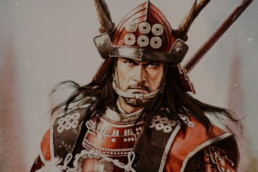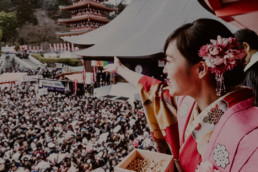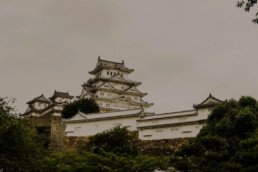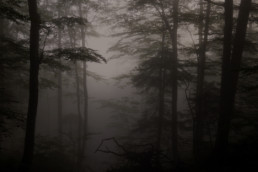Japan History: Sanada Yukimura
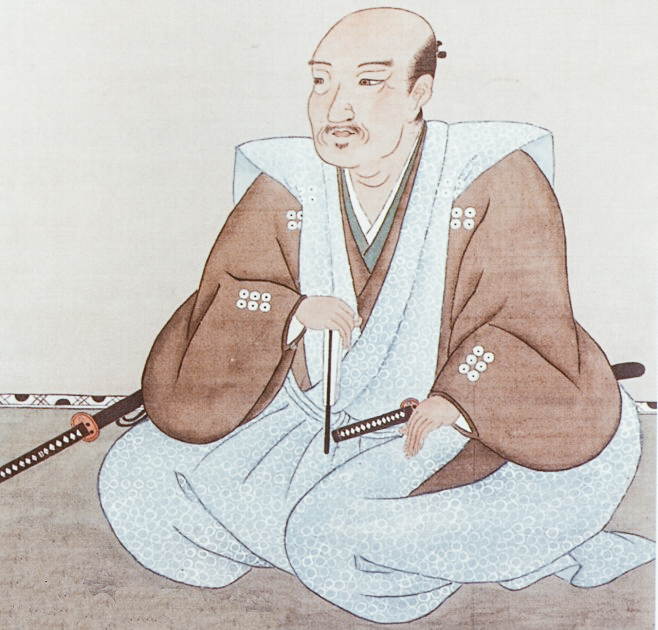
photo credits: wikipedia.org
Sanada (Yukimura) Nobushige was one of the greatest samurai of the Sengoku period. Second child of Sanada Masayuki and younger brother of Sanada Nobuyuki, he was never called "Yukimura" during his lifetime, since his real name was Nobushige. It seems that Yukimura was obtained at the end of the Edo period. Known as "Crimson Demon of War" for his blood-red banners and red armor, he was also recognized as "the greatest warrior of Japan" and even "The last Sengoku hero" by his peers.
As a young man, he was sent by his father as a hostage to the Uesugi clan in exchange for Uesugi's support against the Tokugawa. The father who later sided with Toyotomi Hideyoshi, as Uesugi had done, allowed him to return home to Ueda.
Sanada Nobushige served Hideyoshi directly. His first wife, Aki-hime, was the daughter of Otani Yoshitsugu even though adopted by Toyotomi Hideyoshi. Nobushige had seven daughters and three children with four wives, the last was born two months after his father's death.
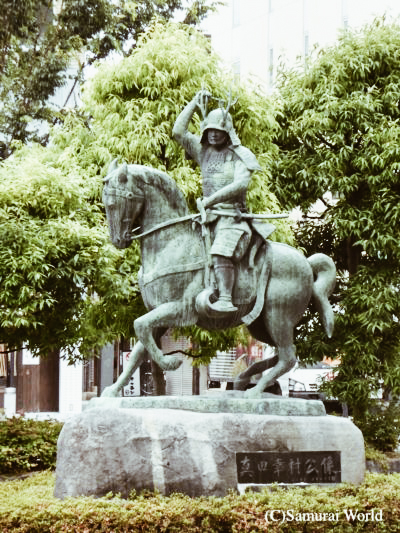
photo credits: samurai-world.com
Ueda Castle, built in 1583, was the home of the Sanada clan. The fact that it was well built was first tested in 1583 when the castle resisted the attack of a numerically superior Tokugawa force. The defeat would have been embarrassing for the Tokugawa in the future. Another similar siege of Ueda Castle in the 1600s at the time of the Battle of Sekigahara also saw Tokugawa Hidetada, son and heir of Ieyasu, who led his army along Nakasendo, strategically important. Along the way, he stopped and besieged Ueda Castle. Although there was a great distance from the battlefield of Sekigahara, events at Ueda Castle would have almost destroyed the intentions of the Tokugawa legions. The Sanada resisted long enough for Hidetada to arrive late to the battle itself, depriving Tokugawa of about 38,000 men. Nobushige commanded only 2,000 men inside the castle.
Sanada Masayuki and his son Nobushige kept Ueda's castle as an ally of Western forces, however, Sanada Nobuyuki, was fighting for the Tokugawa. This ensured that at least one member of the Sanada family would be among the winners, regardless of the outcome. This was clearly a plan to preserve the family name. Following Sekigahara, Nobushige and his father were deprived of their domain and exiled to the holy mountain, Koya.
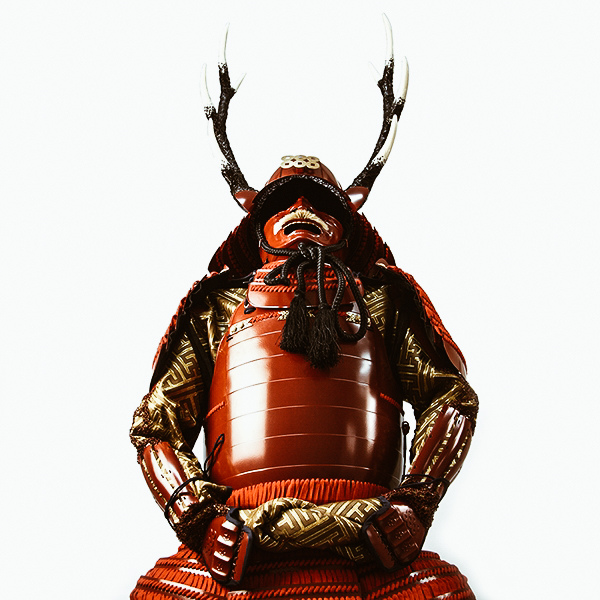
Photo Credits: tozandoshop.com
14 years after Sanada's father and son were sent into exile, Nobushige would rebel against the Tokugawa again during the winter siege of Osaka, and again the following year in the summer campaign. Nobushige had built a crescent-shaped fortress in the southwestern corner of Osaka Castle, known as Sanada Maru. The fortified outpost was surrounded by a wide, deep and dry moat. The earth of the moat was piled up inside, and along the top of this embankment, there was a simple two-story wooden wall, with platforms at regular intervals. Apparently, the Sanada Maru was armed with cannons along the walls. Sanada Nobushige and about 7,000 men repeatedly repulsed around 25,000 Tokugawa allies. Sometimes the Sanada samurai left the borders of the Sanada Maru to counter the enemy troops.
The following year, during the summer siege of Osaka, Sanada Nobushige commanded the right flank of Toyotomi's forces. On June 3, despite being completely exhausted from the battle against Date Masamune's forces, Nobushige and his men had returned to Osaka Castle to find the 150,000 Tokugawa men preparing to make one final assault. Hoping to catch them off guard and destroy their formations, Nobushige sent his son, Daisuke, to instruct Hideyori to look for opportunities to get out of the castle and attack the Tokugawa.
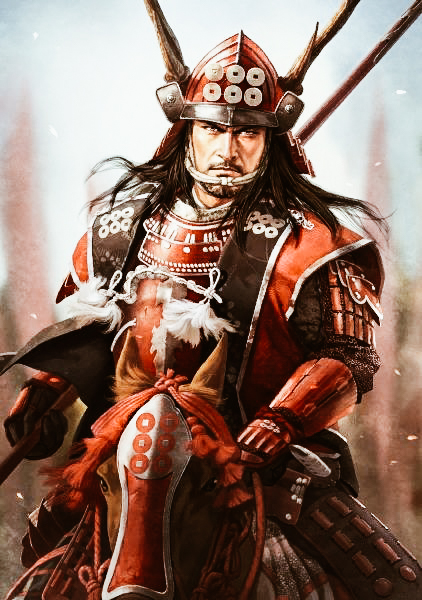
photo credits: pinterest.it
However, at the time of the attack, Hideyori appears to have lost control and failed to launch a counterattack that could have reversed the siege. The Sanada troops were overwhelmed. Seriously wounded in the fierce battle against Matsudaira Tadanao who had pledged him for most of this day, from 12 to 17, Nobushige sat under a pine tree in the Yasui Shrine grounds, unable to continue. When the wave of enemy forces approached, he calmly said his name, and saying that he was too tired to continue fighting, he allowed a Tokugawa samurai named Nishio Nizaemon to take his head. Sanada Nobushige was 47 years old. The news of his death spread rapidly and the morale of Osaka's troops fell.
The name Yukimura was known throughout Japan due to its fearless fighting.
Shimazu Iehisa of Satsuma praised Yukimura, writing "Sanada was the greatest warrior in Japan, stronger than any warrior in the stories of ancient times. The Tokugawa army was half defeated. I say this only in general."
A statue of the weary warrior is now found under the second-generation pine tree in the ground of the sanctuary.
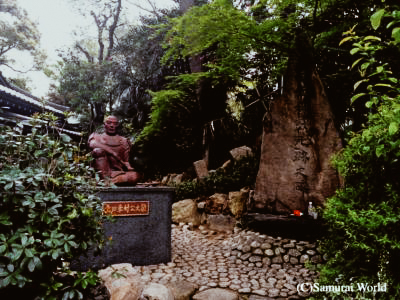
photo credits: samurai-world.com
Japan Folklore: Setsubun, how to drive away the demons of winter to welcome spring

photo credits: pinterest.it
Traditional Japanese culture has always been characterized by a constant and loving observation of the natural world, its manifestations and its seasonal cycles. Therefore, the attention given to spring, the special moment when nature awakens in all its creatures the necessity of renewal, must not marvel.
This season is celebrated in Japan with the haru matsuri (春祭, spring festival), a set of events whose beginning is marked by the occurrence of Setsubun (節 分). In the traditional Japanese lunisolar calendar, in fact, every change of season is introduced by a day called, indeed, setsubun (literally "division of the seasons"). Spring setsubun, which falls on 3 February, represents the last day of winter and the day before the start of the new season. It marks the transition from "Taikan" (大寒, big cold) to "Risshun" (立春, first day of spring) and is therefore the most favorable moment for a special "cleaning" from winter burdens, which will drive away evil spirits and favor the entrance of the new life-giving energy. This is the meaning of the traditional "demon expulsion" that takes place on this day through different rituals and customs.
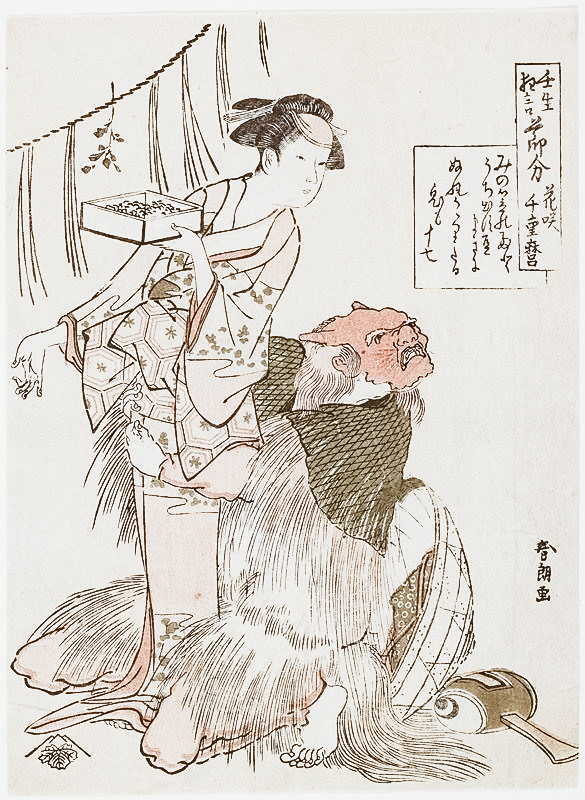
photo credits: pinimg.com
Ancient rituals and family fun
The most famous ritual is undoubtedly the mamemaki (豆 撒 き), which is the launch of soy beans. In the domestic sphere it is entrusted to Toshi Otoko (年 男, man of the year), that is the man of the family of the zodiacal sign of the lunar year entering or in his absence the oldest of the house. He has the task of driving out the harmful spirits and negativities from the house and the new year that is about to start by throwing around irimame (炒 り 豆, toasted soy beans) to the cry of "Oni wa soto! Fuku wa uchi! (鬼は外! 福は内, "Outside the demons! Inside fortune!"). In alternative, he can hurl the beans at another member of the family who plays the part of the demon wearing a mask of oni (Japanese folklore ogres). Subsequently, each member of the family must collect and eat a number of beans corresponding to their age plus one to ensure a year of success and good health (in the popular tradition, in fact, the demons are considered carriers of natural disasters and diseases).
When the oni is expelled, it is necessary to keep the evil spirits away from the house. For this reason it is possible to see in this period of the year some very special amulets, the Hiiragi Iwashi (柊 鰯), exposed at the entrance of the houses. These are holly branches that have the head of a dried sardine skewered on the end, sometimes complemented by pieces of garlic or onion, which have the purpose of keeping demons away, scared by the thorns and the pungent odor emanating from these talismans.
In both cases it is a tradition that has its roots in antiquity. Nowadays it is possible to buy "Setsubun sets" - made of oni masks and roasted beans - in any combini, but in reality the mamemaki custom would have originated in the Muromachi period (1392-1573) and seems to be inspired to an ancient legend, whose plot is still represented in the form of pantomime in the temple of Mibu-dera in Kyoto. Here the kyogen (ancient Japanese theatrical form) titled "Setsubun" is repeated several times during the day and it is said that it is sufficient to watch it to be purified by any negative or evil spirit. Its plot follows the folk tale that tells of an ogre who, in human form, goes one day to visit a widow. Thanks to its magic hammer, the ogre makes a beautiful kimono, which attracts the widow's attention. Eager to take possession not only of the kimono but also of the magic hammer, she decides to get him drunk to be able to steal them both. The ogre, however, aware of the theft, reveals his demonic nature and attacks the woman, who defends herself with the first thing that is within reach: a handful of soy beans. The oni, wounded but again in possession of his goods, flees leaving the widow safe and sound and perhaps a little wiser.

photo credits: toyokeizai.net
Knowing how to look in the right direction
A tradition of more recent origins, born in Osaka but later spread to the rest of the country, is instead linked to the ehōmaki (恵 方 巻, scroll of lucky direction). In this case, to ensure that the good luck is on our side in the year that is about to begin, it is necessary to eat a special sushi roll in a single solution, without interruptions and in silence, facing the lucky direction of the year. The act is less simple than it may seem, considering that the ehōmaki is much more often than a common sushi roll (having to contain seven ingredients to propitiate the seven gods of luck) and is 20 centimeters long. It is not worth eating it cut into pieces, because doing so would also cut luck. To perform the ritual correctly, it is therefore necessary to arm yourself with concentration, determination and a precise compass. For those interested in experimenting with this custom, the most common ingredients to obtain for the filling are cucumber, surimi, salmon, tuna, anago (sea eel), tamagoyaki (Japanese omelette), dried kanpyo strips and seasoned (Japanese pumpkin) and shiitake mushrooms, as well as rice and nori seaweed, while the lucky direction for 2019 is East-North East.
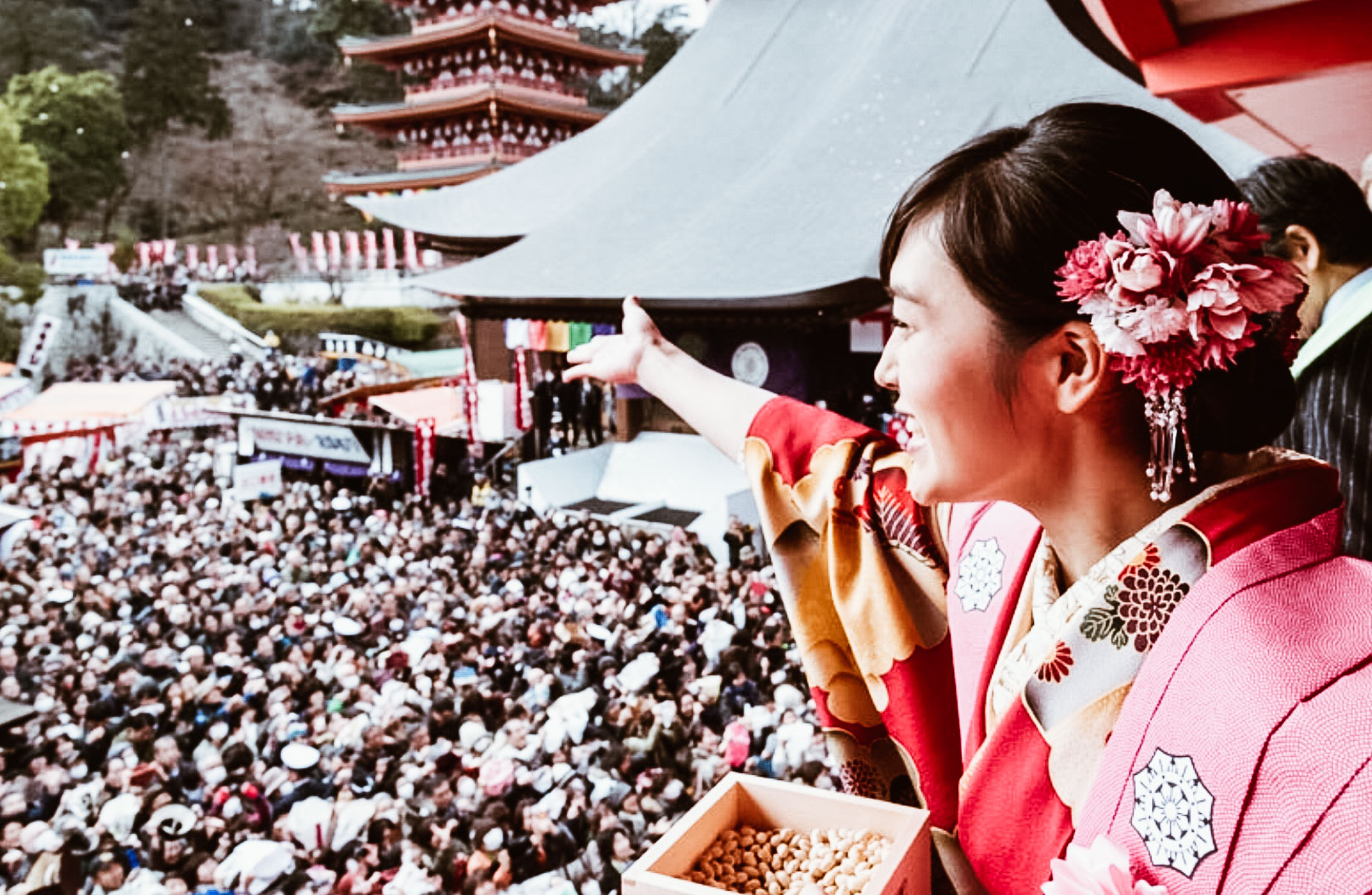
photo credits: shinsenhino.com
Festive temples
The Setsubun can be celebrated in a domestic environment or at least in a private dimension, with relatives and friends, but it is also and above all a recurrence to be lived in community. For example, schools often organize moments of recreation for children, who wear oni masks or have fun chasing adults dressed as demons while hurling beans against them. But it is especially in the temples that it is possible to experience the collective dimension of the party, participating in the events specially created for this day. First of all, of course, the mamemaki, carried out by the monks who throw soy beans from the top of the stages on the crowd gathered for the event. In some temples more shifts are organized for this ritual, reserving some special ones for children, who in addition to the beans receive sweets or small gifts. In addition to the monks, celebrities are often present, such as sports champions, personalities of the entertainment world, actors of the kabuki theater, geisha and maiko, television celebrities, who add a note of attractive glamor to traditional festivities. Among the latter we must remember the theatrical performances, the various purification ceremonies or even the striking archery performances, in which the archers throw their arrows at targets that have demon-like features.
In short, Setsubun is the ideal day for those who wish to live in company a start of the year that helps to renew their energies and for families who have the opportunity to spend a moment of joy together, something that always remains the best talisman against all evil at every latitude.
Japan Travel: The imperial Palace & Gardens

photo credit: Google Images
I’ve been to Tokyo a few times now and one of my favourite spot in the whole city are the Imperial East Gardens in the Chiyoda area. Whenever I’m in the city, I always find a moment (sometimes even more than one) to visit this amazing place, a green heart in Tokyo, full of history and tradition but surrounded by the modernity of this frantic city.
The Tokyo Imperial Palace (皇居 Kōkyo, literally "Imperial Residence") is the primary residence of the Emperor of Japan. With its large parks it is located in the heart of the Chiyoda ward and contains buildings including the main palace (宮殿 Kyūden), the private residences of the Imperial Family, an archive, museums and administrative offices.
The current palace is built on the site of the old Edo Castle built by the shogun Tokugawa Ieyasu and the total area including the gardens is 1.15 square kilometres.
The history
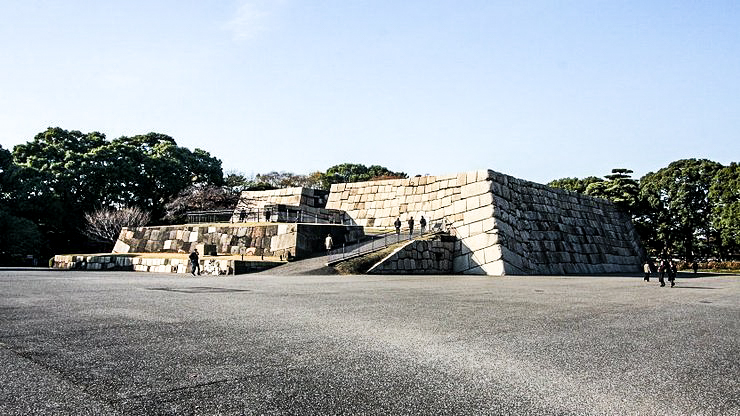

photo credit: japan-guide.com
Edo castle
Built by Tokugawa Ieyasu and assigned it to be the residence of the Tokugawa family, after the end of the shogunate and the Meiji Restoration, the Emperor left the Kyoto Imperial palace and moved to Edo Castle. This became his new residence and it was renamed to Tōkei Castle (東京城 Tōkei-jō), at this time, Tōkyō had also been called Tōkei.
On 5th May 1873, the Nishinomaru Palace (formerly the shōgun's residence) was destroyed by a fire, and the new imperial Palace Castle (宮城 Kyūjō) was constructed on the site in 1888.
The non-profit organisation "Rebuilding Edo-jo Association" (NPO法人 江戸城再建) founded in 2004 has the aim of a historically correct reconstruction of at least the main donjon. This group plans to collect donations and signatures on a petition in support of rebuilding the tower of the old castle so that the capital city can have a symbolic building.


photo credit: Wikipedia, thetraveltester.com
The Old palace
In the Meiji era, most structures from the Edo Castle disappeared. Some were cleared to make way for other buildings while others were destroyed by earthquakes and fire.
In this case, the wooden double bridges (二重橋 Nijūbashi) over the moat were replaced with stone and iron bridges while the buildings of the Imperial Palace constructed in the Meiji era were made of wood.
When you first face the Imperial Palace you are suddenly transported into the classical and traditional Japanese architecture, but if you have the chance to walk those halls you’ll discover that on the inside, the palace is a mixture of then-fashionable Japanese and European elements. Western chairs, tables and heavy curtains furnish the spaces, the floors of the public rooms have parquets or carpets while the residential spaces us traditional tatami mats.
Guests were received in the main audience hall, which was the central part of the palace. Its floor space was more than 223 tsubo (approximately 737.25 m2 - 7,935.7 sq ft) and the interior the ceiling was in traditional Japanese-Style, while the floor was made out of parquet. For the roof, a style similar to the Kyoto Imperial Palace was maintained, however it was covered with fireproof coppered plates rather than the traditional Japanese cypress shingles.
More concrete buildings were added in the late Taishō and early Shōwa period, such as the headquarters of the Imperial Household Ministry and the Privy Council.
During the Second World War, on the night of 25th May 1945, most structures of the Imperial Palace were destroyed in the Allied firebombing raid on Tokyo. Due to this, a new main palace hall (宮殿 Kyūden) and residences were constructed on the western portion of the site in the 1960s and this area was renamed Imperial Residence (皇居 Kōkyo) while the eastern part was renamed East Garden (東御苑 Higashi-Gyoen) and became a public park in 1968.
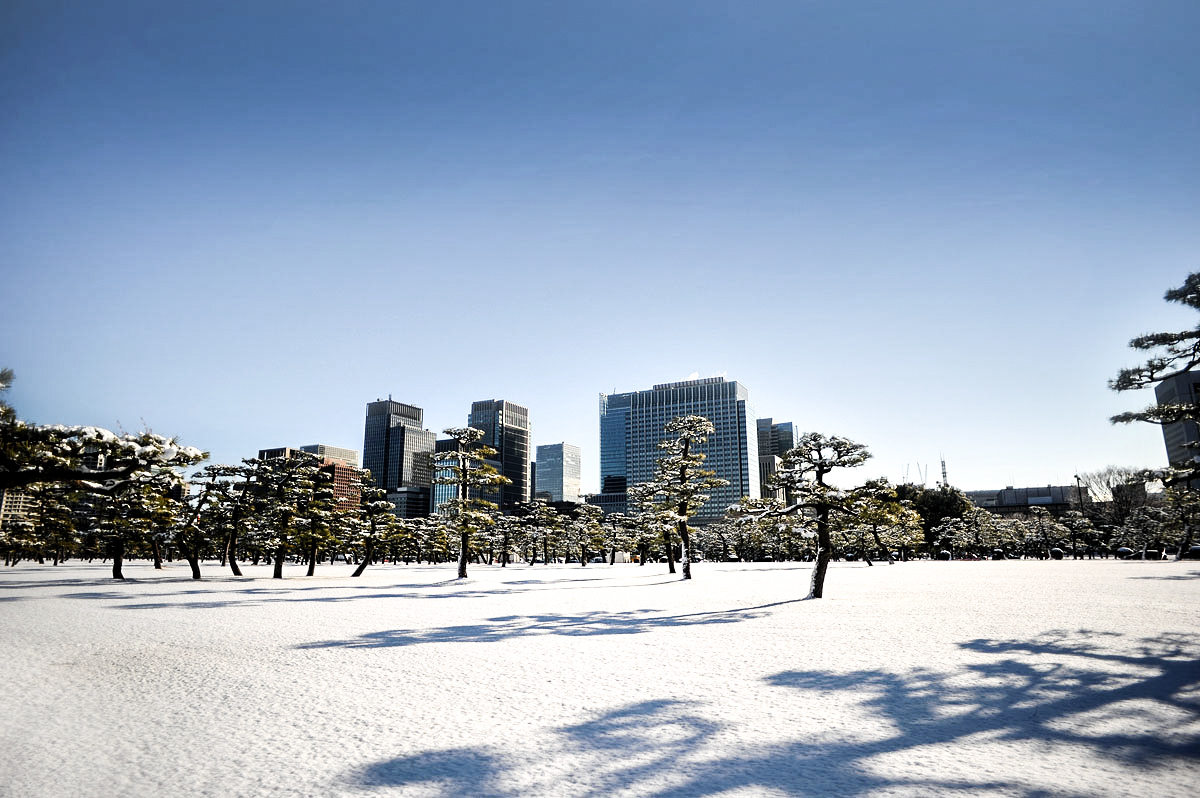
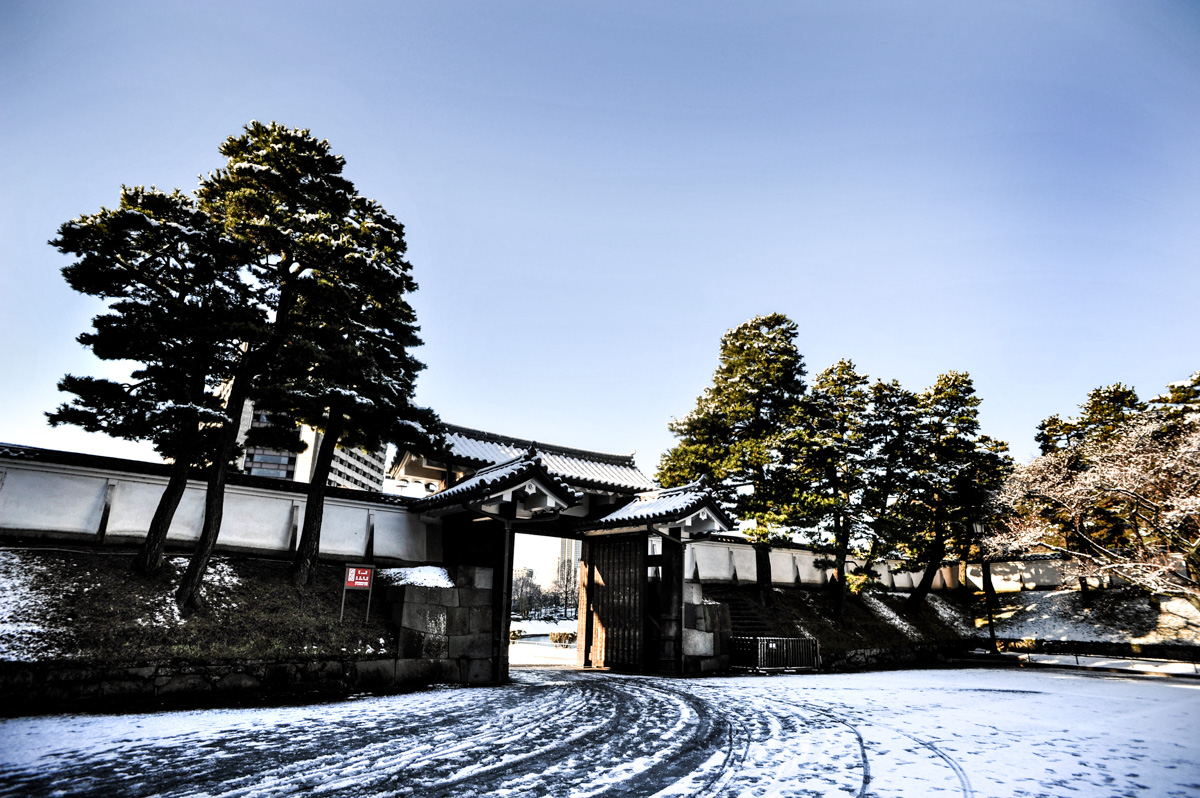
photo credit: tokyobling.wordpress.com
The Imperial Palace today
After surviving defining moment in history, the modern palace Kyūden (宮殿) was designed for various imperial court functions and reception is located in the old Nishinomaru section of the palace grounds.
As of today, the residence of the current Emperor and empress is located in the Fukiage Gardens and it is now on a much more modest scale, compared to what originally was.
Except for Imperial Household Agency and the East Gardens, the palace is generally closed to the public, except for reserved guided tours from Tuesdays to Saturdays. Each New Year (January 2) and Emperor's Birthday, the public is permitted to enter through the Nakamon (inner gate) where they gather in the Kyuden Totei Plaza in front of the Chowaden Hall. On this occasion, the Imperial Family appears on the balcony before the crowd and the Emperor normally gives a short speech greeting and thanking the visitors and wishing them good health and blessings.
The Gardens
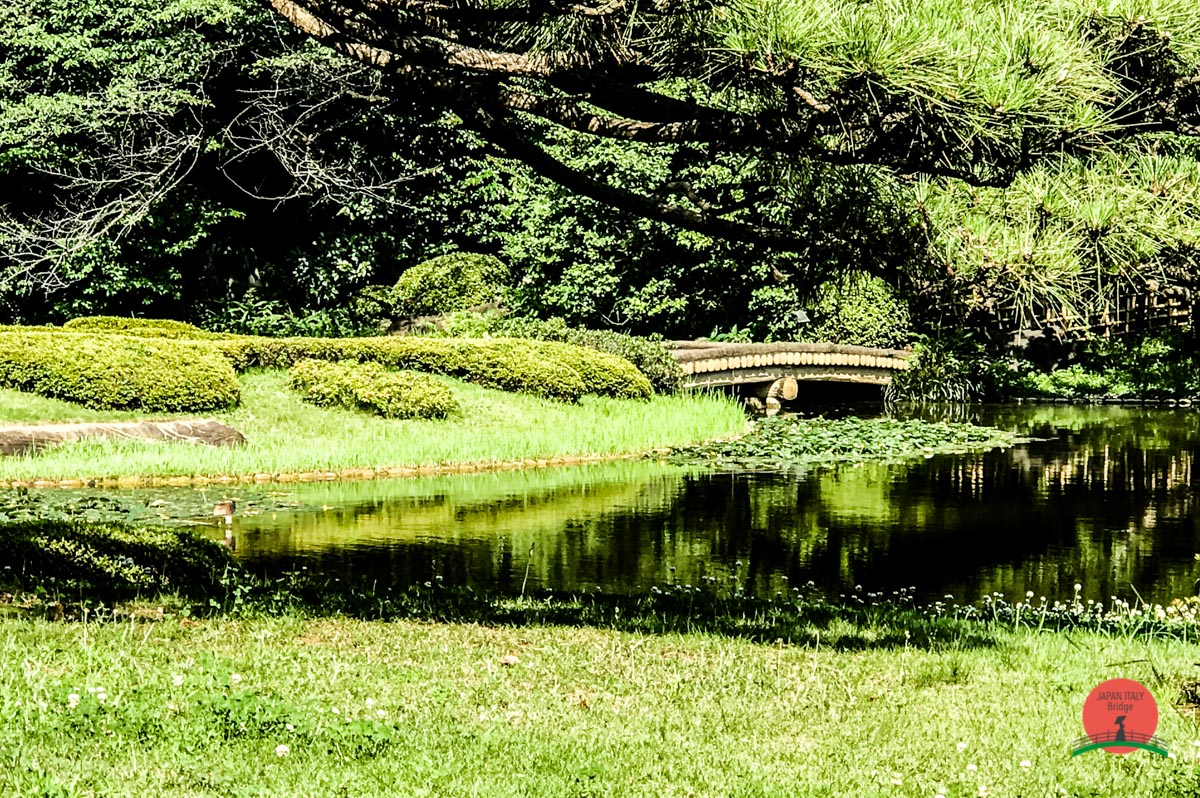

Fukiage Garden
This is probably the oldest garden of the complex. The Fukiage Garden has carried the name since the Edo period and this is where the Imperial Family lives today.
The Fukiage Ōmiya Palace (吹上大宮御所 Fukiage Ōmiya-gosho) in the northern section was originally the residence of Emperor Showa and Empress Kōjun and was called the Fukiage Palace. After the Emperor's death in 1989, the palace was renamed the Fukiage Ōmiya Palace and was the residence of the Empress Dowager until her death in 2000.
Here you can also find the Three Palace Sanctuaries (宮中三殿 Kyūchū-sanden), parts of the Imperial Regalia of Japan and the sanctuary plays a religious role in imperial enthronements and weddings.


photo credit: Wikipedia
Tōkagakudō (Music Hall)
The Tōkagakudō (桃華楽堂, Peach Blossom Music Hall) is located to the east of the former main donjon of Edo Castle in the Honmaru and it was built was built in commemoration of the 60th birthday of Empress Kōjun on 6 March 1963. The ferro-concrete building covers a total area of 1,254 m2 (13,500 sq ft) and each of its eight outer walls is decorated with differently designed mosaic tiles.
Ninomaru Garden
If you want to have a quick look of the whole Japan vegetation, this is where you should be since symbolic trees representing each prefecture are planted in the northwestern corner of Ninomaru enceinte. Such trees have been donated from each prefecture and there are total of 260, covering 30 varieties.

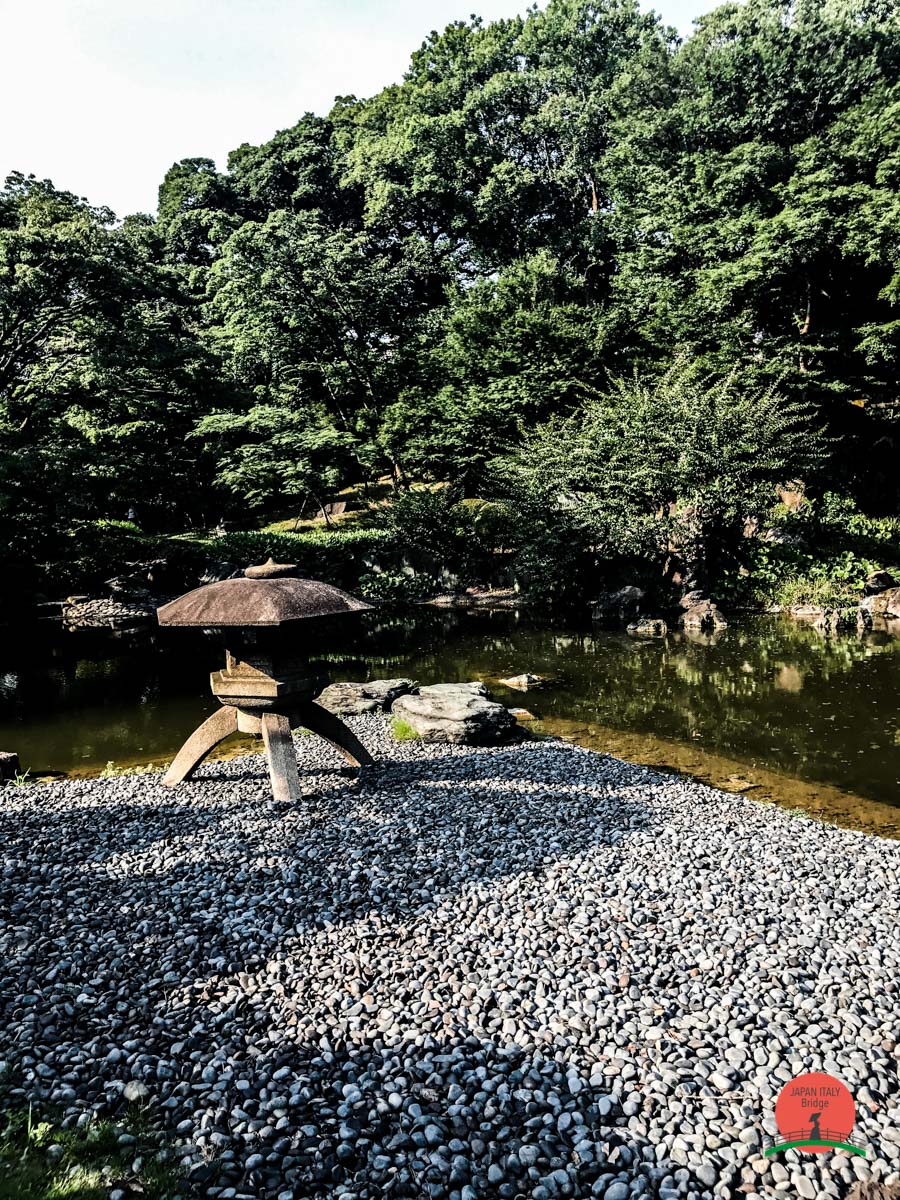
Kitanomaru
Located in the northern part of the enceinte of Edo Castle, this public park is famous for being the house of the Nippon Budokan Hall, one of the biggest sites for concerts, sports event and more.
Here you can also find a bronze monument dedicated to Prince Kitashirakawa Yoshihisa (北白川宮能久親王 Kitashirakawa-no-miya Yoshihisa-shinnō).
East Garden
And last but not least, the East Gardens the most famous of this whole complex. This is where most of the administrative buildings for the palace are located and encompasses the former Honmaru and Ninomaru areas of Edo Castle, a total of 210,000 m2 (2,300,000 sq ft). Located on the grounds of the East Garden is the Imperial Tokagakudo Music Hall, the Music Department of the Board of Ceremonies of the Imperial Household, the Archives and Mausolea Department Imperial Household Agency, structures for the guards such as the Saineikan dojo, and the Museum of the Imperial Collections.
Construction work began in 1961 with a new pond in the Ninomaru, as well as the repair and restoration of various keeps and structures from the Edo period. On 30 May 1963, the area was declared by the Japanese government a "Special Historic Relic" under the Cultural Properties Protection Law.


This is actually my personal favourite and whenever I come to Tokyo, I always try to spend one afternoon here. It’s one of the most visited landmarks of the city, that’s true, but in spite of all the tourists walking around, there is this magical atmosphere of tranquillity in the air and it’s the perfect spot to just sit, read a book, write on your notebook all the adventures you’ve had in this amazing city and just take in all the history this place has seen.
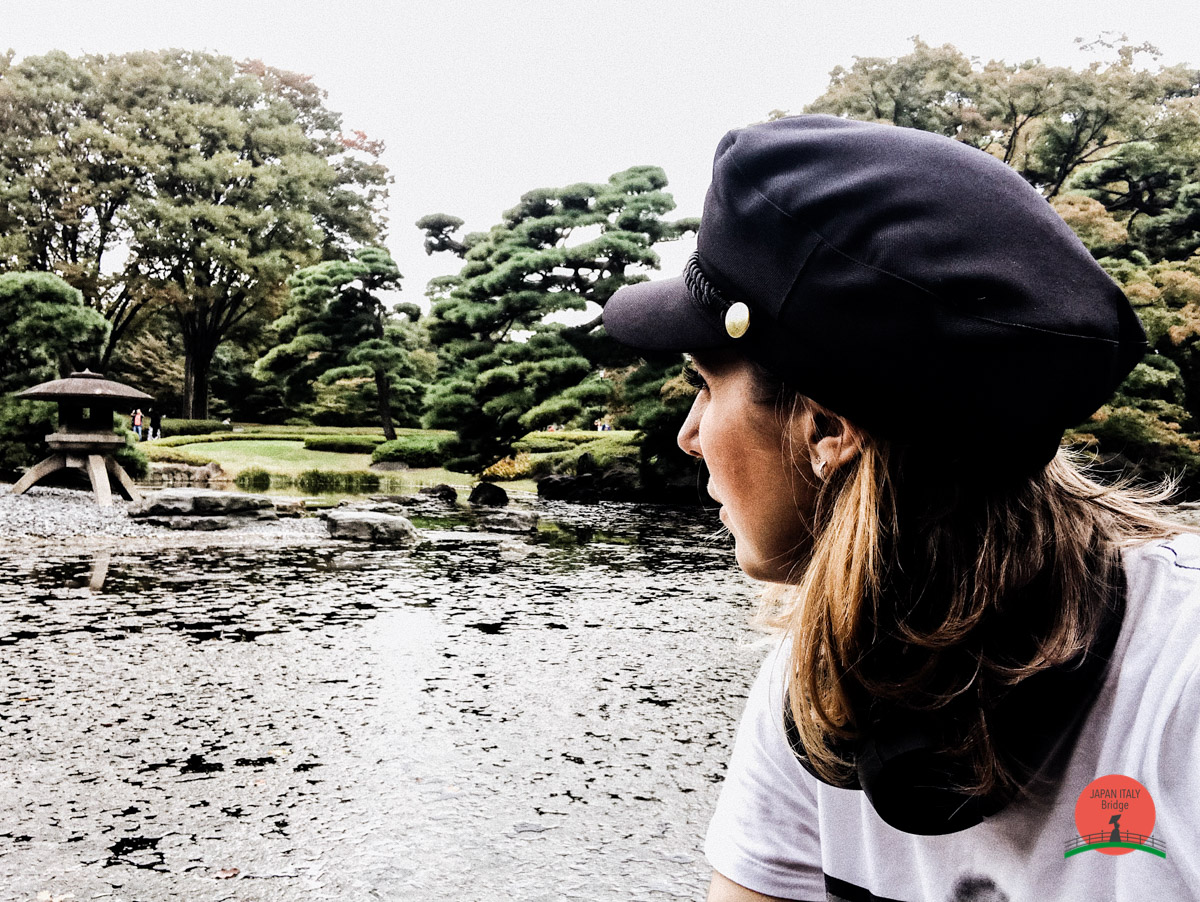
Access
The Otemon entrance to the East Gardens is a short walk from Otemachi Station on the Chiyoda, Tozai, Marunouchi, Hanzomon and Mita Subway Lines. It can also be reached in a 10-15 minute walk from Tokyo Station.
Opening Hours
9:00 to 16:30 (until 17:00 from mid April through August; until 16:00 from November through February). Admission ends 30 minutes before closing.
Closed
Mondays, Fridays, New Year (Dec 28 to Jan 3) and some special occasions. If Monday or Friday is a national holiday, the gardens are closed on the following day instead.
Admission
Free
Japan Travel: Planning a trip to Japan
A country of contrasts and contradictions, Japan is one of the most desirable travel destinations in the world. Even among Asian countries, Japan has its very own culture that is unique from all the other nations in the region. History and tradition thrives together with modernisation from the progress made in the last century. It is this impeccable co-existence that gives this nation it’s unique scenery that is unlike the typical Westernised civilisation. This is the only place where you can see ancient temples and shrines, Geishas, and old tea houses situated right next to the world-famous bullet train and service robots.


Japan is a relatively small country compared to other countries, so it’s very easy to travel from top to bottom. Every city has its own character and vibe which you will discover, regardless of whether you explore just the highlights or dive deep into the culture.
However, if you’re planning for your first trip to Japan may be a daunting task. So in this post, we will share with you some tips that may come in handy when you wish to begin your Japanese adventure.
When to visit Japan
If you love Japan, you may want to visit the country during one of the most significant seasons of the year for the locals. Hanami (cherry blossom viewing; second half of March through May) is widely known as one of the most beautiful seasons to visit Japan. And despite the elevated costs during this period of time, it is still very popular season for visiting.
If you decide to visit Japan and its capital during summer, brace yourself for the heat, the humidity, and get ready to sweat. Summers in Japan, especially in the central and southern regions country, are known to be very hot and humid. The weather is, however, pleasant on most days.
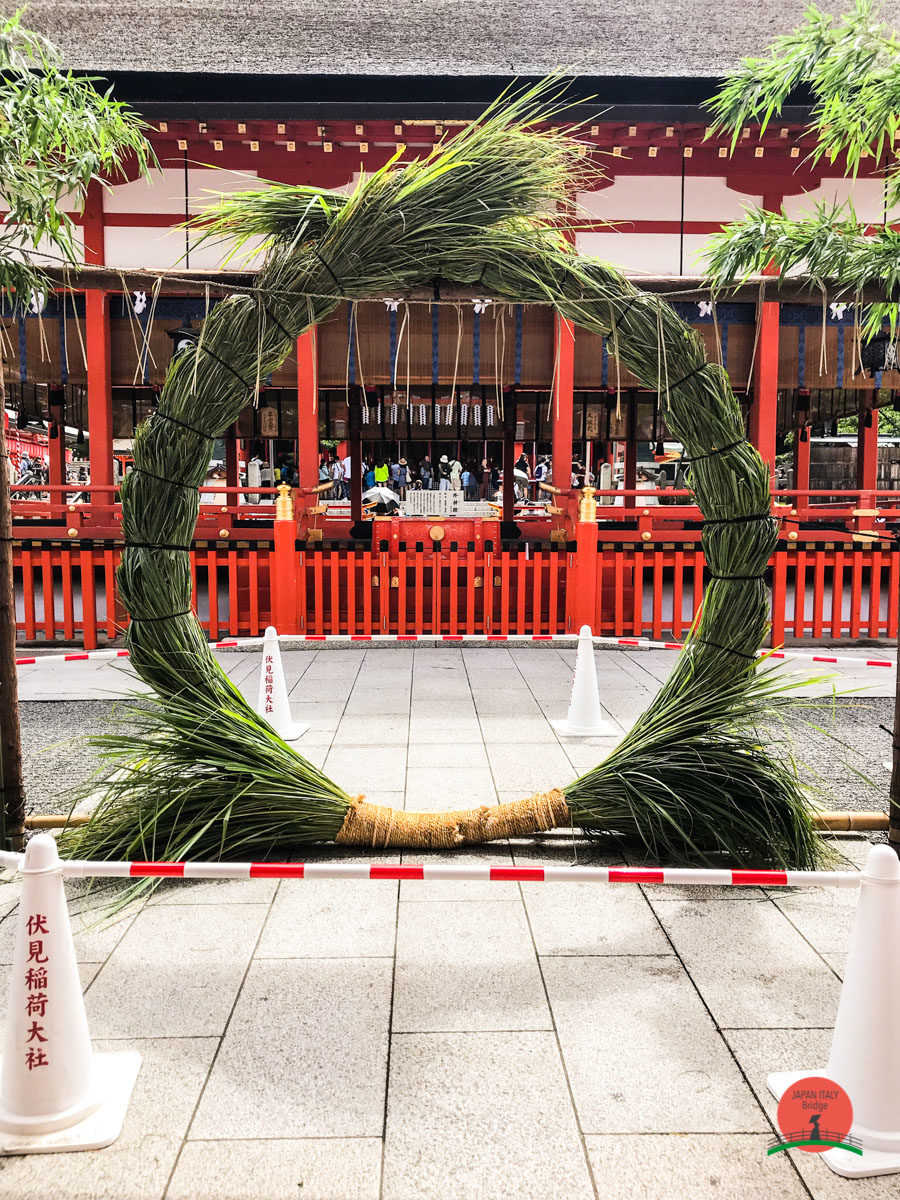

If cherry blossoms are not your cup of tea, the fall season in Japan is another wonderful period for beautiful scenery, with the autumn foliage turning summer greens into fiery reds. The weather will be mostly cool, and dryer than summer too.
Aside from these, you can always visit the holiday season between Christmas and New Year’s Day. Every year, cities light up with festive illuminations to create a magical and mystical atmosphere. It goes without saying that these are better experienced at night. The weather during these weeks are not typically too cold, but there may be snow depending on which region you visit, so do make sure to pack warm clothes.
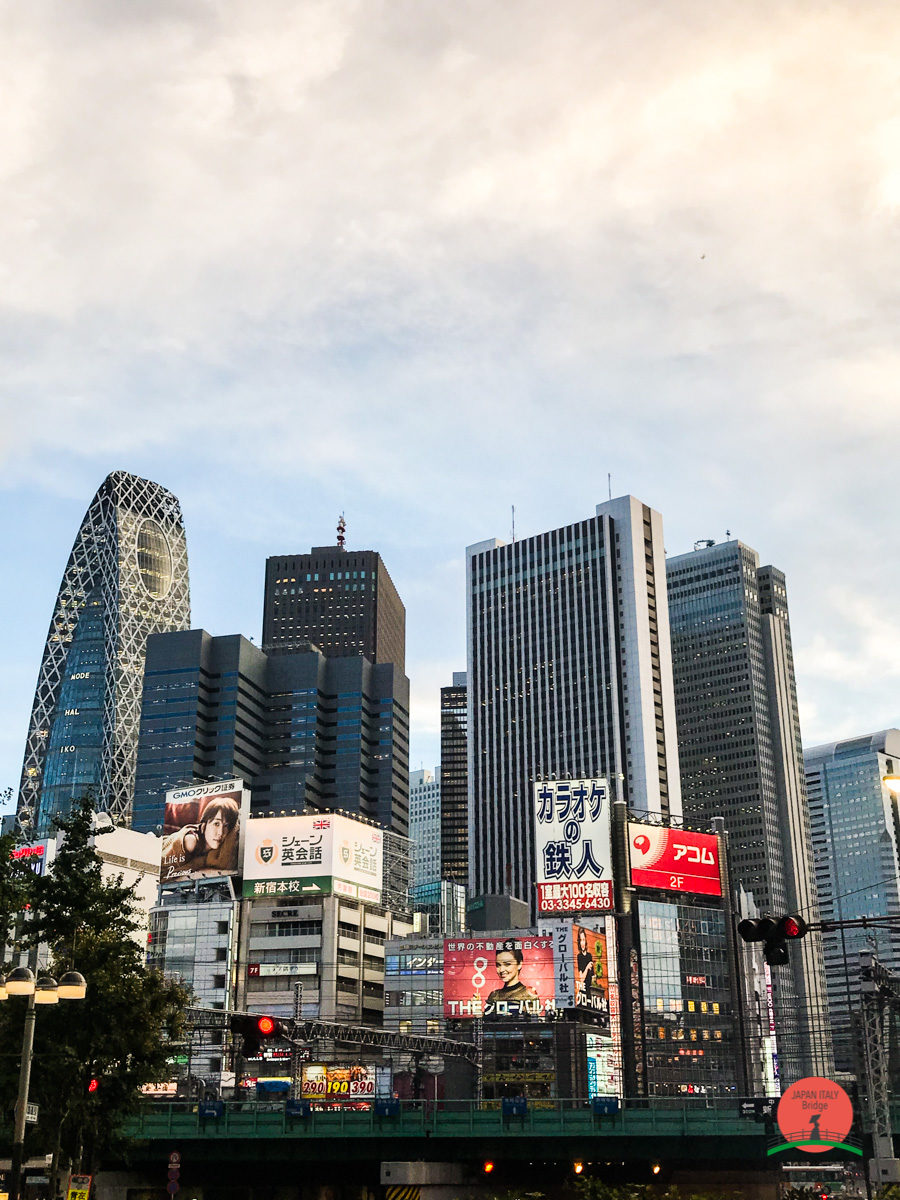
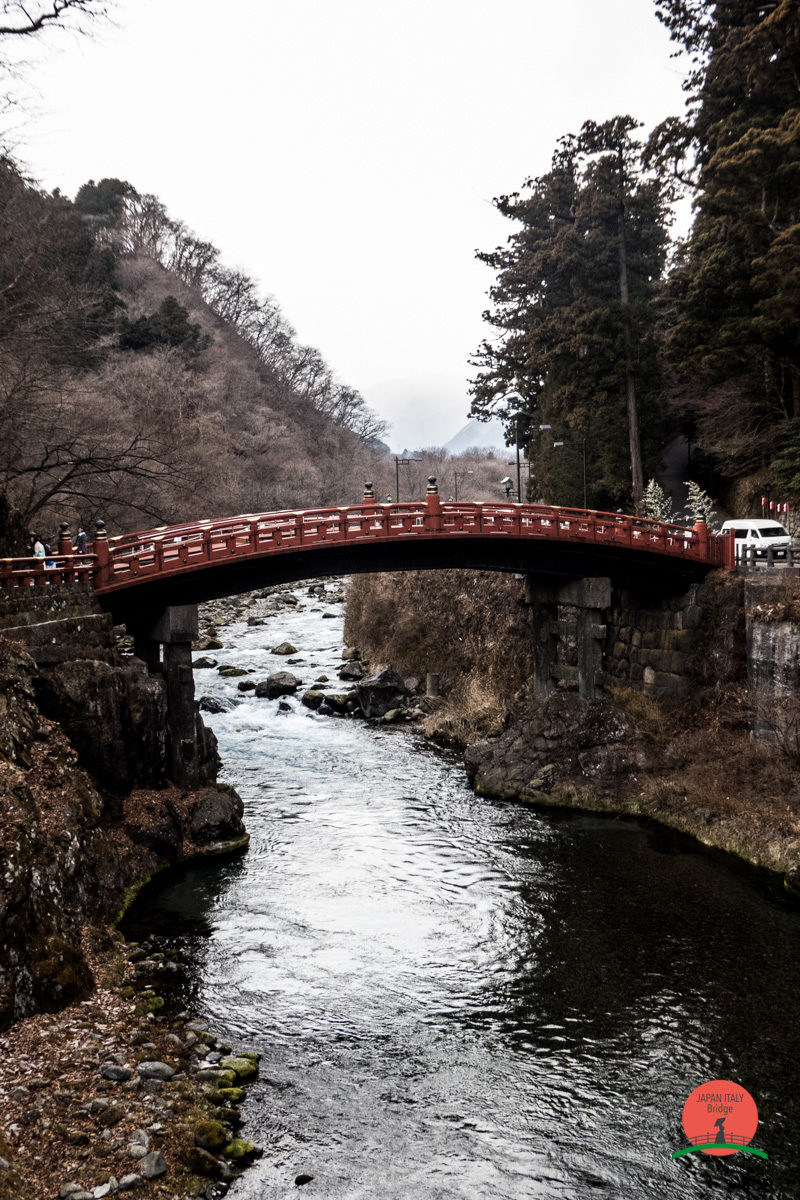
How long to stay in Japan
Even if Japan looks small on the world map, this country’s vibrant culture means that it is filled with unique sights and experiences for you during your visit. Touring the whole country in one go will be a rather expensive trip. So, if you are planning to stay for more than two weeks in this amazing place, do make sure to plan your spending and allocate the right amount of money for each day.
Which cities to visit
No matter how long you decide to stay in Japan, these places should be on your list of must-go’s. Usually the routes are the same for every trip. So here’s our suggestions for traveling if you wish to restrict yourself to the main cities of Japan
1. Tokyo
2. Nikko
3. Takayama
4. Hiroshima
5. Kyoto
6. Osaka
7. Nagoya
8. Yokohama
9. Niigata
10. Sendai
11. Sapporo
Basing yourself in any of these cities will give you access to make shorter day trips to neighbouring cities and towns. Do note that although the big cities are touted as the main highlights of Japan, the country’s less widely-known destinations are filled with hidden treasures that you can uncover.
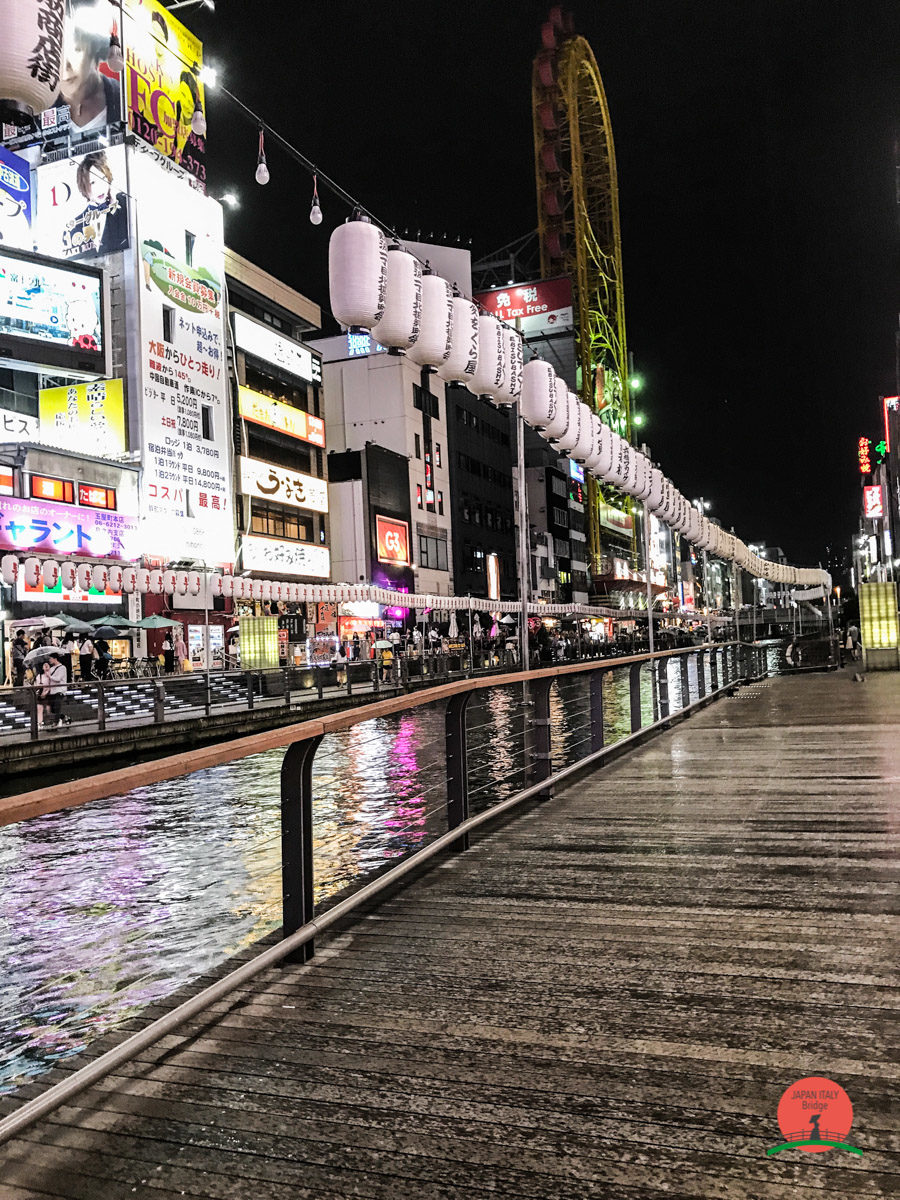

Travel Budget
Japan has the unfortunate reputation of being an expensive country. Although that may be true, it is, in fact, not that much different from any other country like Italy or England.
You can adapt your travel budget according to your preferences and what you have, and there are plenty of ways to save money.
You can find several combinations of deals that include both flights and accommodation online on websites.
Transportation
When you fly to Tokyo, the capital of Japan, you will land in either Narita or Haneda airport. Japan has a wonderful transportation network that is very extensive and reliable. There are a variety of different apps that can help you find the routes to use. For trains and public transportations, the go-to apps are HYPERDIA and JR-EAST Train Info.
At every station, there are ticket machines where you can purchase the tickets, but when in doubt, you can always ask staff members at the station information desks. There will usually be someone who speaks basic English.

The Cards & Passes
Purchasing a ticket at the vending machines sometimes can reveal to be rather troublesome, especially if you don’t read the language. To make things easier, there are different cards you can use. Information about the various cards and passes are as follows:
- Japan Rail pass: This is a pass for the train system that you can use throughout all the JR rail line, the national train transportation company. You can purchase the pass only from abroad so you have to purchase it while you are still in your country. The pass has a 7, 14, or 21 consecutive days of validity. You can purchase the first class (Green) or second class (Ordinary). The quality standard on Japanese trains is very high, so even if you purchase the second class pass you can still travel very comfortably. Furthermore, there’s a 50% off discount for kids between 6 and 11 years old.


- Suica Card: this is a prepaid card. It can be used instead of train tickets but also as a normal prepaid card in some stores. The Suica card is valid throughout all Japan, it will also give you a small discount on the Tokyo subway and it’s very convenient because it will allow you to avoid going through the ticketing process each time you want to ride the train. You can buy it and recharge it through ticketing machine in every station. You may, alternatively, approach a ticket agent for it.
The Suica Card is valid on trains belonging to the JR East lines and on the JR trains of the following regions: Sendai, Niigata, Sapporo, Osaka, Okayama, Hiroshima, Nagoya Shizuoka. It is also possible to use it on some trains, busses and subways in the Fukuoka region.
On the Suica, you can recharge up to 20000 ¥. The initial cost to buy the card can be 1000, 2000, 3000, 4000, 5000 and 10000 ¥ and this include the 500¥ deposit.
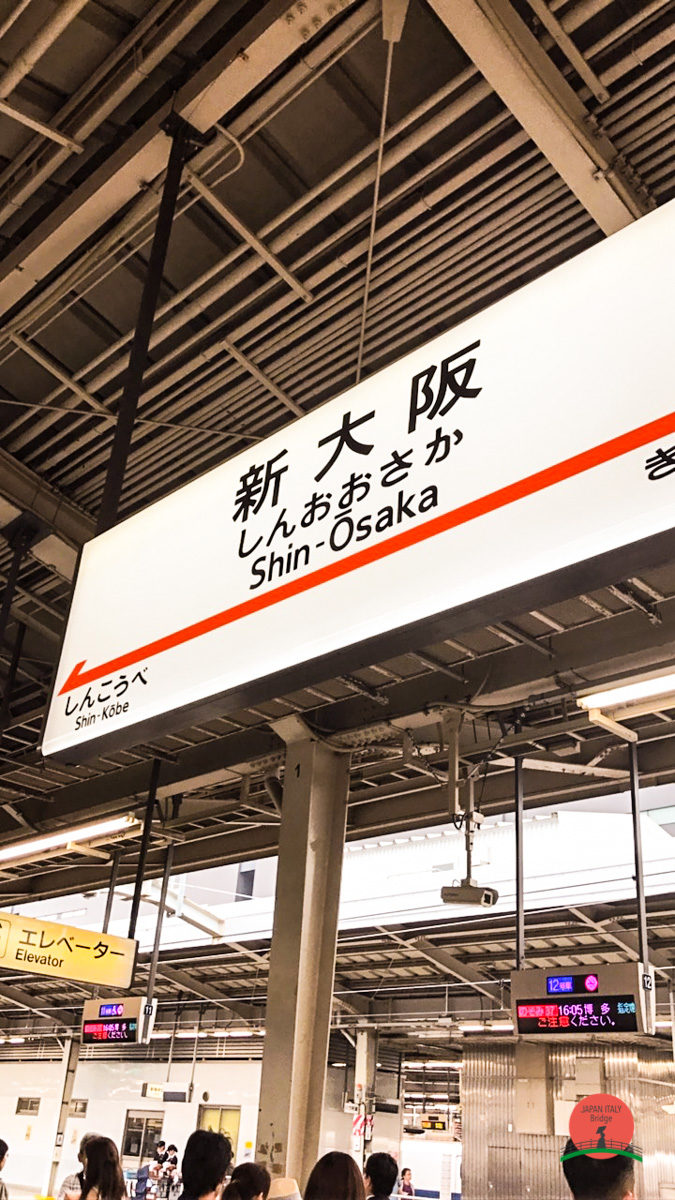

To use the Suica, rest the card on the blue sensor while facing the barriers at the subway/train. If the sensor will remain blue, the doors of the barriers will open and you can pass through. If the sensor becomes red, it means that you don’t have enough credit on the card and you will have to recharge it. It may be worth noting that these cards and the charged amounts in it remain valid for up to 10 years from your last ride.
- Pasmo: this is a card for Tokyo transportation and it works exactly like the Suica.
Accommodation in Japan
Hotels and accommodations are typically the most expensive part in of a trip to Japan. However, a very wide range of accommodation types is available in both Japanese and Western style interiors. Rates per night can range from less than 2,000 yen per person in a dormitory or capsule hotel to over 50,000 yen per person in a first class Hotel or Ryokan.
Ryokans (and their cheaper versions, the minshuku) are traditional Japanese guesthouses and are the best spots to learn about the cultural traditions relating to Japanese food and hospitality. This is something unique that can only be experienced in Japan. As such, if your budget allows it, do plan to stay in one of these places for a couple of nights. Japan also has capsule, or pod, hotels where you essentially sleep in a high-tech version of bunk beds.


Japanese Food
Japanese cuisine is one of the best in the world, offering a balanced diet in a wide variety of gastronomical delights and seasonal dishes. Restaurants and eateries are easily found, from the world-famous, Michelin-starred restaurants to the local hole-in-the-wall stands that are popular among the locals. Although sushi and sashimi are most famous Japanese dishes known around the world, Japan actually has such a large variety of foods that there really is something to eat for everyone. Many of the best establishments are, however, typically specialised in one type of food.
Sushi, Sashimi, Kaisen Don, Tempura, Katsu Curry, Udon, Soba, Ramen, Yakitori, Takoyaki. These just are some of the dishes you should definitely try while exploring the land of the Rising Sun.
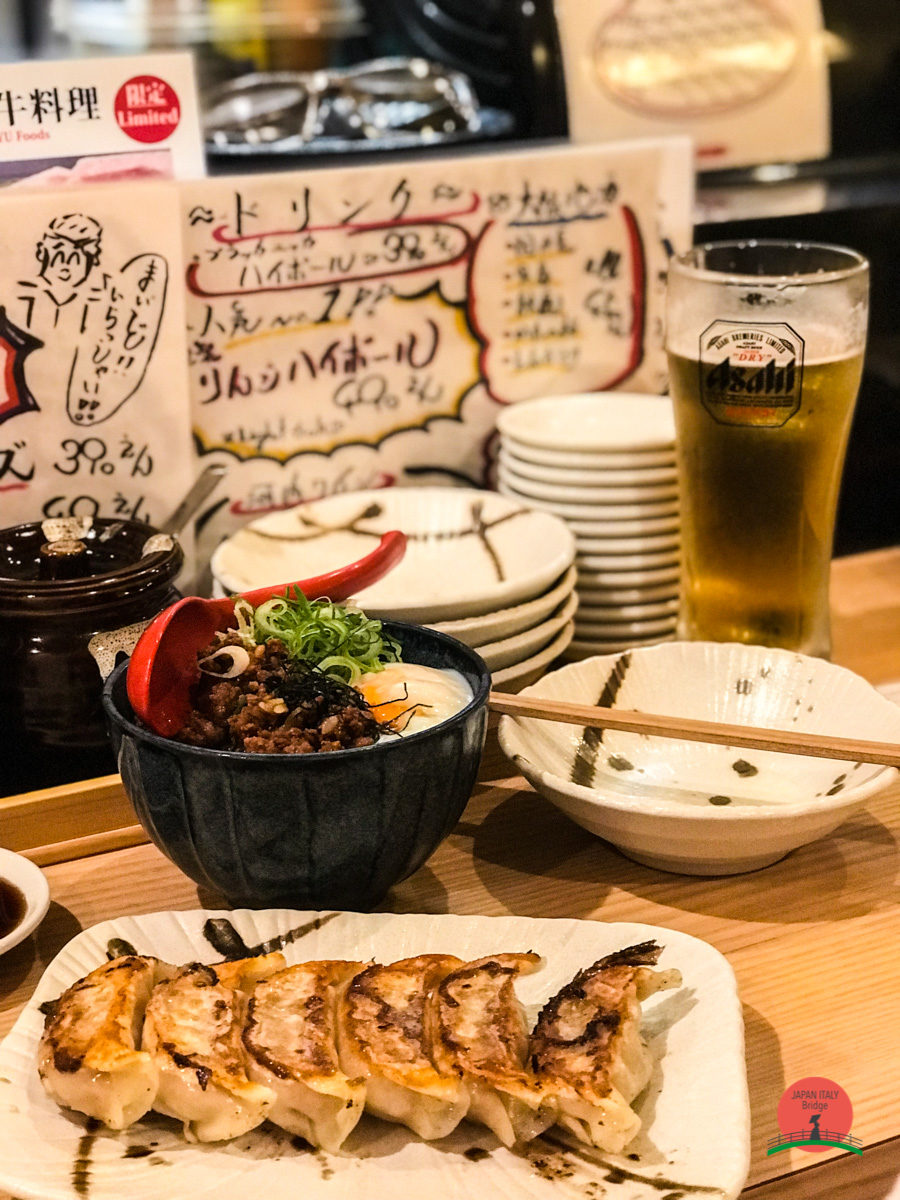

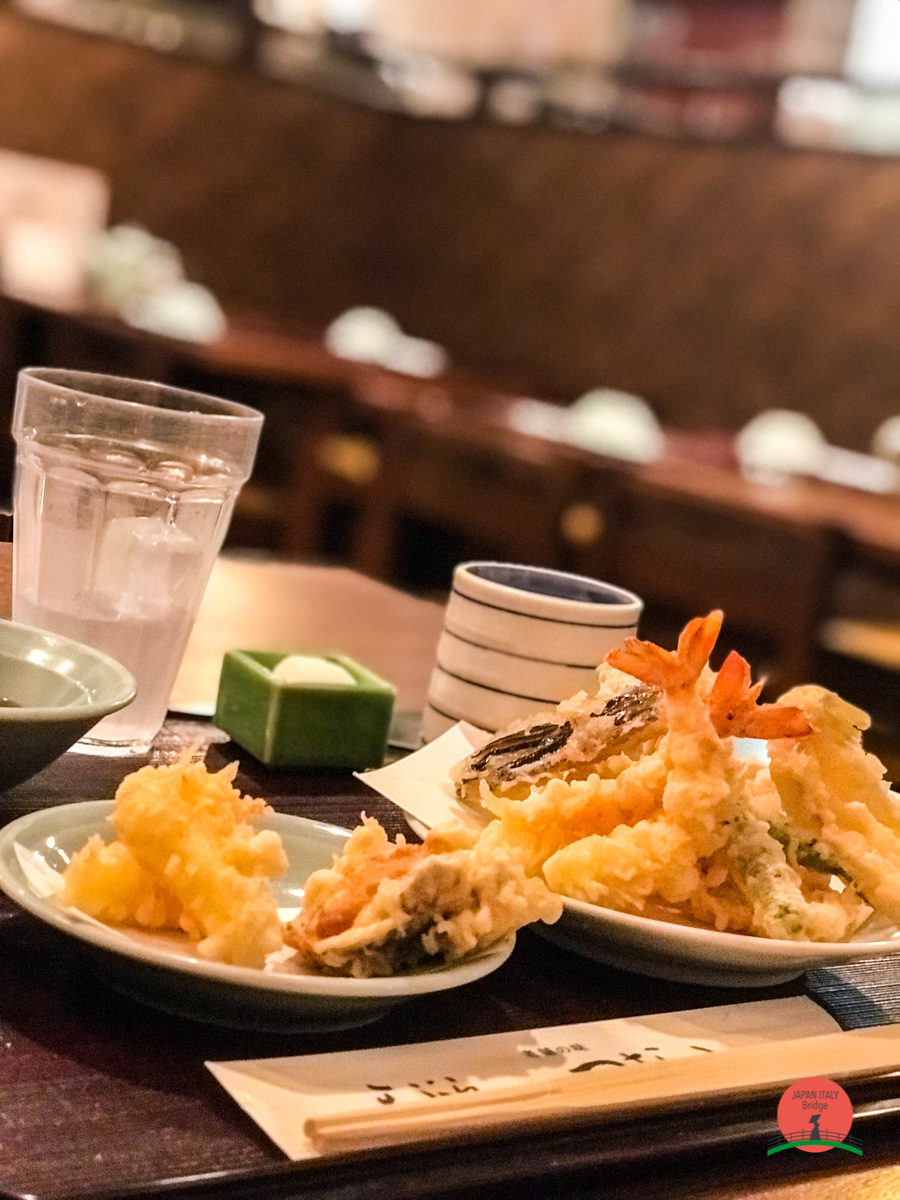
Luggage in Japan
No matter how long you are staying in the country, you may want to try to pack light. Most hotels rooms are very small and sometimes, there may not be enough space to have large suitcases lying around. Packing light is especially important if you plan to travel mostly by public transportation. Do remember that most trains do not have space for bulky luggage and despite the highly advanced train system, not every station is equipped with escalators or elevators. Furthermore, most hotels don’t allow checking in before 2 or 3 p.m., so do make concessions for holding onto your luggage until then.

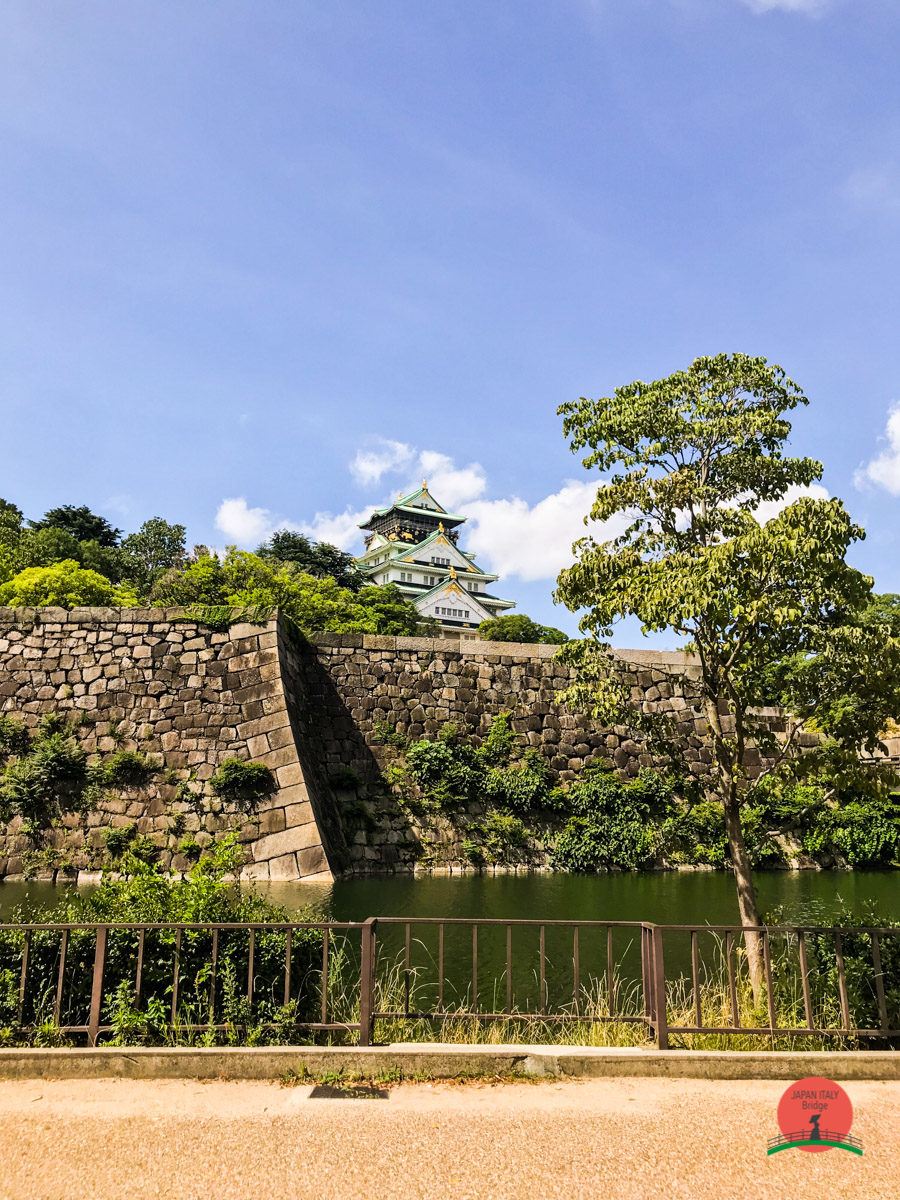
Other things to note
Currency: Japanese Yen (JPY)
Electricity: 100V/50-60Hz (North American plug; usually two-pronged. Often has both flat pins the same size. You may need an adapter.)
Main Airports: Tokyo’s Narita Airport (NRT). Tokyo’s Haneda Airport (HND). Osaka’s Kansai Airport (KIX).
Water: Safe. Bring a water bottle and fill from the tap as you travel.
Internet connectivity: Japan has excellent internet, among one of the fastest connections in the world.
Local SIM: I highly recommend you secure a SIM card or pocket wifi once you land. Although it’s not cheap, it is handy and it will allow you to save on international data plans with today's communication apps. This will also allows you to use tools like Google Maps in case you get lost.
Visas: Citizens of North America, UK, and Europe do not need a visa to enter for 90 days. Longer extensions are available for some of these countries, and most outside of these regions will need to apply ahead of time. Full visa requirements here.
Noteable festivals: Hanami, or rather Cherry Blossom viewing season is one of the most popular times to visit (end of March through May). Sapporo Snow Festival (February). Fuji Rock Festival (July). Golden Week (April 29 – May 5 — it’s nearly impossible to find accommodation during this week.)
Safety: Japan is incredibly safe. It’s in the culture of every citizen to follow a rigid set of societal rules. Young children travel alone, riding the subway and walking to school on their own with no problems. Scams are rare. There are some reports of sleazy behavior by men on the trains, but such cases rarely occur.

Japan Travel: Hanami
Hanami
About Hanami, or the Flower viewing.
In Japan, spring is synonymous with Hanami. Written with the kanji: Hana 花 "flower" and mi 見 "viewing", the word hanami means enjoying the beauty of blooming flowers. In particular, it refers to the Sakura: cherry blossom.
To understand the profound meaning of this magical tradition, Yosa Buson's haiku is perfect:
“Cherry petals
in the rice-seedling water,
moon and stars.”
In these words we read the aesthetic symbolism behind the relationship between nature and human beings in which everything becomes harmonious. Spring is, in fact, a "rebirth", therefore a renovation of the soul and of the spirit. The falling flowers indicate the transience of things. As flowers reach the peak when they bloom and then fall to be carried away by water, beauty is therefore wonderful and ephemeral at the same time. In Japanese, we can summarize this concept in the small sentence 物の哀れ, "mono no aware". This aesthetic concept expresses a strong emotional participation toward the beauty of nature and human life, with a consequent nostalgic feeling linked to its incessant change.
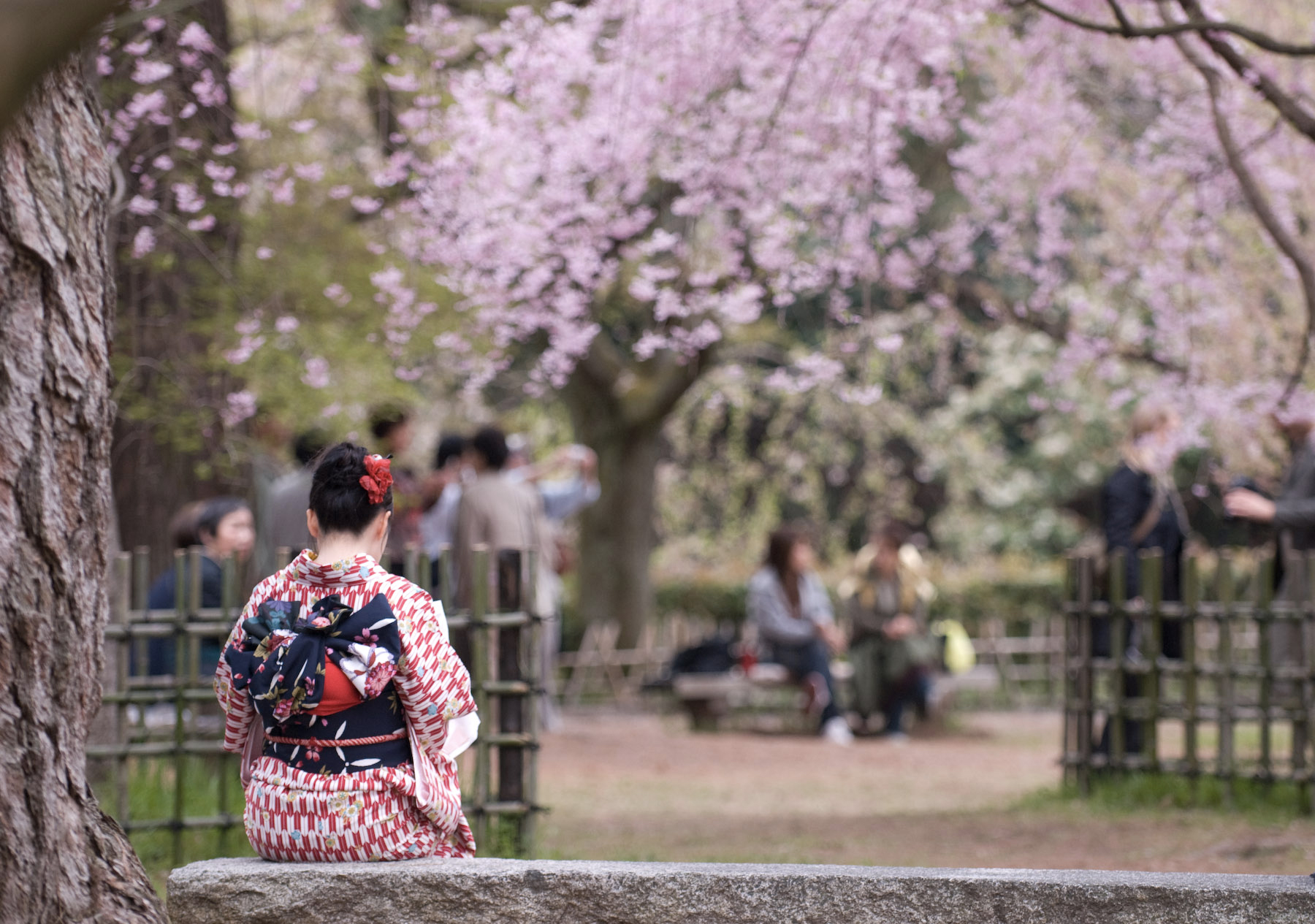
Photo Credits: regex.info
The Roots
Yoshino hills is where cherry trees originated in Japan. The legend says that in the VII century the priest En-no-Ozuno planted some sakura trees casting a curse on them. The curse would hit anyone who dared to cut the trees down. However, there are those who say that the hanami came from China, at the time of the Tang dynasty, which influenced Japan in the Nara period. Originally, there where the “ume” (prunus trees) to offer viewers the spectacle of their flowering. During the Heian period (794-1185) however, the Japanese imperial court moved to Kyoto where the unparalleled beauty of the cherry trees outshone that of the prunus.
Murasaki Shikibu, the court-lady that wrote the "Genji Monogatari”, the first novel ever written, used the word “hanami” related to the cherry blossom viewing for the first time. In the beginning, it was a rite restricted to an elite of nobles, dignitaries, samurai and poets, that drank sake and recited haiku on the beauty of the cherry blossom. In the following Edo period, the hanami spread to lower classes as well, eventually becoming a national holiday. This was also thanks to the shogun Tokugawa Yoshimune that planted areas of cherry blossom trees all over Japan.

Photo Credits: kabekin.com
Between Beauty and Transience, Hanami today
The hanami takes place in a period of time that extends from March to April when sakura reaches their blooming season. Traditionally, people gather together laying out their blue tarps under the trees and, armed with their bento, enjoy the spectacle of nature eating traditional dishes. Among them we can find the hanami-dango, rice dumpling of three colors: pink, white and green, accompanied by green tea and lots of sake. Another typical dish is the sakura mochi, a sweet made of red bean paste and rice, all wrapped in a pickled cherry blossom leaf. And the enjoyment goes on until the evening arrives, culminating in the Yozakura 夜桜 when the night is illuminated by chochin, traditional colored lantern made of paper.

Photo Credits: thespruce.com
Chasing after the best view
Japan is completely invaded by the simultaneous blooming of the trees awaken from the winter torpor, something that strikes the heart as well as the eye. But there are places where the charm of nature is more overwhelming than anywhere else. Among the must-see spots there is the Maruyama park in Kyoto, that is famous for the Shidarezakura, the unique weeping sakura. In Tokyo we can find the Ueno Park with its ancient temples and the Shinobazu pond. The Himeji castle, Hyōgo prefecture, is surrounded by a labyrinth-like wood of cherry trees, while the Hirosaki Castle, Aomori prefecture, is famous for its 2,600 cherry trees. Also, Mt. Yoshino, Nara prefecture, is where 100.000 cherry trees stand out on top of the mountain.
Japan History: Ishikawa Goemon
Ishikawa Goemon

Photo credits: data.ukiyo-e.org
Ishikawa Goemon (石川 五右衛門, 1558 – 8 Ottobre, 1594) è stato un fuorilegge Giapponese semi leggendario che rubava oggetti di valore ai ricchi per darli ai poveri. Proprio per questa sua caratteristica viene a volte definito il Robin Hood del Giappone. Esistono molte storie che lo vedono protagonista e che lo descrivono come un eroe popolare che si batte contro i potenti per i più deboli. L’autenticità di queste storie tuttavia non è sempre certa.
La sua prima apparizione negli annali storici si ritrova nella biografia di Toyotomi Hideyoshi del 1642 che lo descriveva semplicemente come un ladro.
Ci sono varie versioni della vita di Ishikawa Goemon. Secondo una di queste, egli nacque come Sanada Kuranoshin nel 1558 da una famiglia di samurai al servizio del clan Miyoshi della provincia di Iga. Nel 1573, quando suo padre, presumibilmente Ishikawa Akashi, fu assassinato dagli uomini dello shogunato Ashikaga, il quindicenne Sanada giurò vendetta. Cominciò quindi ad allenarsi nelle arti del ninjutsu a Iga sotto Momochi Sandayu. Allievo abilissimo ma di temperamento irruento, fu costretto a scappare quando il suo maestro scoprì la relazione di Sanada con una delle sue amanti.
Altre fonti gli danno il nome di Gorokizu, la cui provenienza viene individuata nella Provincia di Kawachi e non era un nunekin (ninja fuggitivo). Si era poi spostato nella regione del Kansai dove formò e guidò una banda di ladri e banditi come Ishikawa Goemon. Con questa banda rubava ai ricchi signori feudali, mercanti e clericali, condividendo poi il bottino con i poveri.
Secondo un’altra versione, che gli ha anche attribuito un attentato a Oda Nobunaga, sembra sia stato obbligato a diventare un ladro quando la rete organizzativa dei ninja fu distrutta.
Ciò che è certo è che Ishikawa Gomen divenne presto un personaggio popolare e apprezzato dal popolo, e non mancano gli aneddoti sulle sue avventure. Si dice che una volta, entrato in una stanza per compiere un furto, venne distratto dal sorriso di un bambino. Ishikawa cominciò a giocare con lui perdendo così il momento per mettere a segno il colpo. Un’altra storia riguarda il suo tentativo di assassinare il grande generale Oda Nobunaga. Una volta entrato nell’edificio di Oda, si nascose nell’attico proprio sopra la camera da letto del generale. Quando questi si fu coricato, Ishikawa praticò un buco sul soffitto proprio in corrispondenza della testa di Oda. Dal buco calò un tubicino tenendolo sospeso sopra la bocca del daimyo, tramite il quale fece passare un potente veleno. Ma il sonno di Oda Nobunaga era leggero e, svegliatosi, riuscì a sventare in tempo l’attentato.
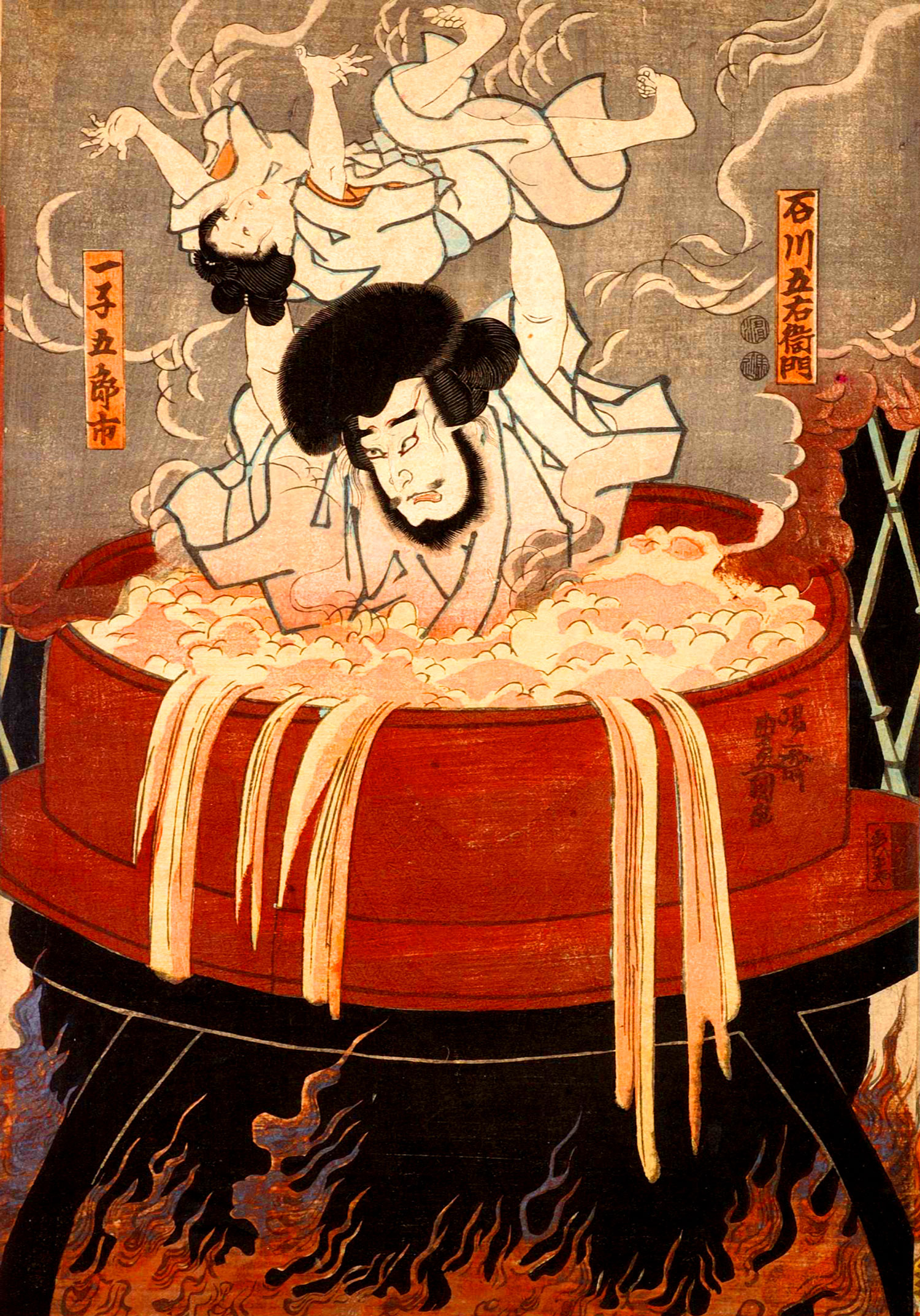
Photo credits: wikipedia.org
Versioni molto conflittuali riguardano anche la sua pubblica esecuzione nell’olio bollente davanti al cancello del tempio Buddhista Nanzen-ji a Kyoto.
Secondo una prima versione, alcuni compagni di scorribande di Goemon furono catturati e costretti a confessare il nome del loro capo.
Una seconda versione afferma invece che Goemon provò ad assassinare Toyotomi Hideyoshi. Alcuni dicono che lo fece per vendicare la morte di sua moglie Otaki e la cattura di suo figlio Gobei, altri perchè lo shogun era ritenuto un despota. Entrato nella camera di Hideyoshi, nel castello di Fushimi, fu però scoperto dalle guardie perché urtò un tavolo facendo cadere una campanella. A volte si parla invece di un bruciatore di incenso magico capace di emettere un suono di richiamo. Fu quindi catturato e condannato a morire, gettato vivo nell’olio bollente in un calderone di ferro, insieme al suo figlio più giovane.
Ma se Goemon incontrò così la sua fine, le storie divergono sul destino del figlioletto. In alcune, Goemon riuscì a salvarlo tenendolo in alto sopra la testa, e il figlio fu poi perdonato. In altre invece, si dice che il padre all’inizio provò a salvare il figlio tenendolo sopra la testa ma, resosi conto della futilità del suo gesto, lo spinse sul fondo del calderone per ucciderlo il prima possibile. Rimase poi con il corpo del bambino sollevato in alto in segno di scherno verso i suoi nemici, fino alla morte per il dolore e le ferite.
Anche la data della sua morte è incerta, alcuni dicono che avvenne in estate, mentre altri la datano l’8 Ottobre, quindi in autunno. Prima di morire, Goemon lasciò un poema d’addio nel quale diceva che qualunque cosa fosse successa, al mondo ci sarebbero sempre stati dei ladri.
Una pietra tombale dedicata a lui può essere visitata ancora oggi nel Tempio Daiunin a Kyoto, mentre le tradizionali vasche verticali giapponesi, solitamente di ferro o legno, prendono ancora oggi il nome di goemonburo (Vasca di Goemon)
Teatro Kabuki e Cultura Popolare
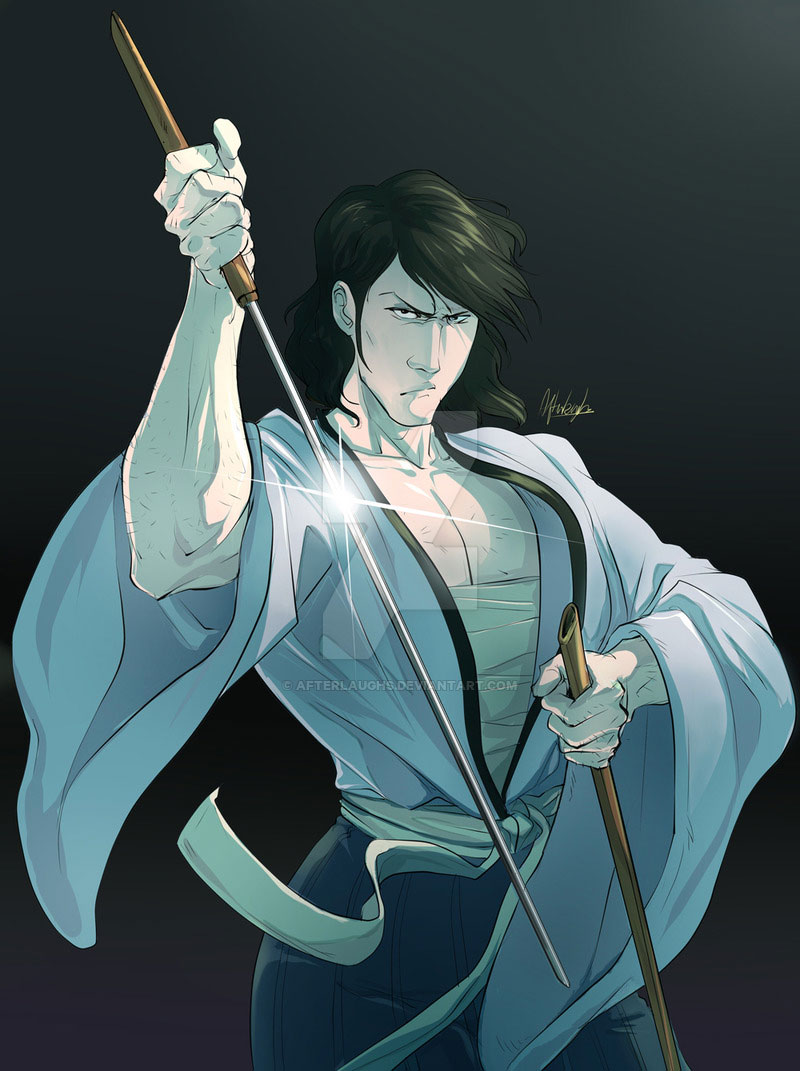
Photo credits: img00.deviantart.net
Ishikawa Goemon è il soggetto di molte rappresentazioni teatrali kabuki. Quella che ancora oggi viene messa in scena è Kinmon Gosan no Kiri (Il Portale d’Oro e lo Stemma di Paulonia). Consiste in cinque atti scritti da Namiki Gohei nel 1778, di cui il più famoso è quello intitolato Sanmon Gosan no Kiri (Il Portale Sanmon e lo Stemma di Paulonia). In questo atto Goemon è visto seduto in cima al portale Sanmon del tempio Nanzen-ji. Sta fumando una pipa d’argento molto grande chiamata kiseru ed esclama “La vista primaverile merita un migliaio di pezzi d’oro, o così dicono, ma è troppo poco, troppo poco. Agli occhi di Goemon ne vale diecimila!” Goemon presto capisce che suo padre, un cinese chiamato So Sokei, era stato ucciso da Mashiba Hisayoshi e comincia a preparare la sua vendetta.
Il suo personaggio appare anche nel famoso racconto Quarantasette Ronin, messo in scena per la prima volta nel 1778. Nel 1992 invece, Goemon appare nella serie kabuki di alcuni francobolli postali Giapponesi.
Nella cultura popolare moderna ci sono in generale due modi in cui Goemon viene rappresentato: un giovane, scaltro ninja, o un potente bandito Giapponese.
Goemon è il personaggio principale della serie di video games Konami Ganbare Goemon dalla quale è stata tratta una serie televisiva. È anche il personaggio principale dei romanzi Shinobi no Mono e della serie di film ad essi ispirati, interpretati da Ichikawa Raizō VIII nel ruolo di Goemon. Nel terzo film, Shin Shinobi no Mono, conosciuto in inglese come Goemon Will Never Die, il protagonista sfugge all’esecuzione mentre un altro uomo viene buttato al suo posto nell’olio bollente. Goemon è anche il protagonista di alcuni film Giapponesi girati prima della seconda guerra mondiale come Ishikawa Goemon Ichidaiki e Ishikawa Goemon no Hoji.
Più recentemente invece, nel film Goemon del 2009 è interpretato da Yōsuke Eguchi e viene descritto come il più fedele seguace di Nobunaga assieme a Hattori Hanzō.
Il personaggio di Goemon appare anche in numerosi altri videogame come nella serie Samurai Warriors, Warriors Orochi, Blood Warrior, Kessen III, Ninja Master's: Haō Ninpō Chō, Shall We Date?: Ninja Love, Shogun Warriors, e Throne of Darkness. È anche una Persona iniziale in Persona 5 di Yusuke Kitagawa, e fa la sua comparsa anche nel drama taiga Hideyoshi, nel film Roppa no Ôkubo Hikozaemon, e nei manga Kaze ga Gotoku e Bobobo-bo Bo-bobo.
Ma forse il personaggio più conosciuto di tutti è quello di Ishikawa Goemon XIII in Lupin III (Rupan Sansei), diretto discendente del leggendario ladro e ideato dal mangaka Monkey Punch.
Japan Travel: Aokigahara
Aokigahara
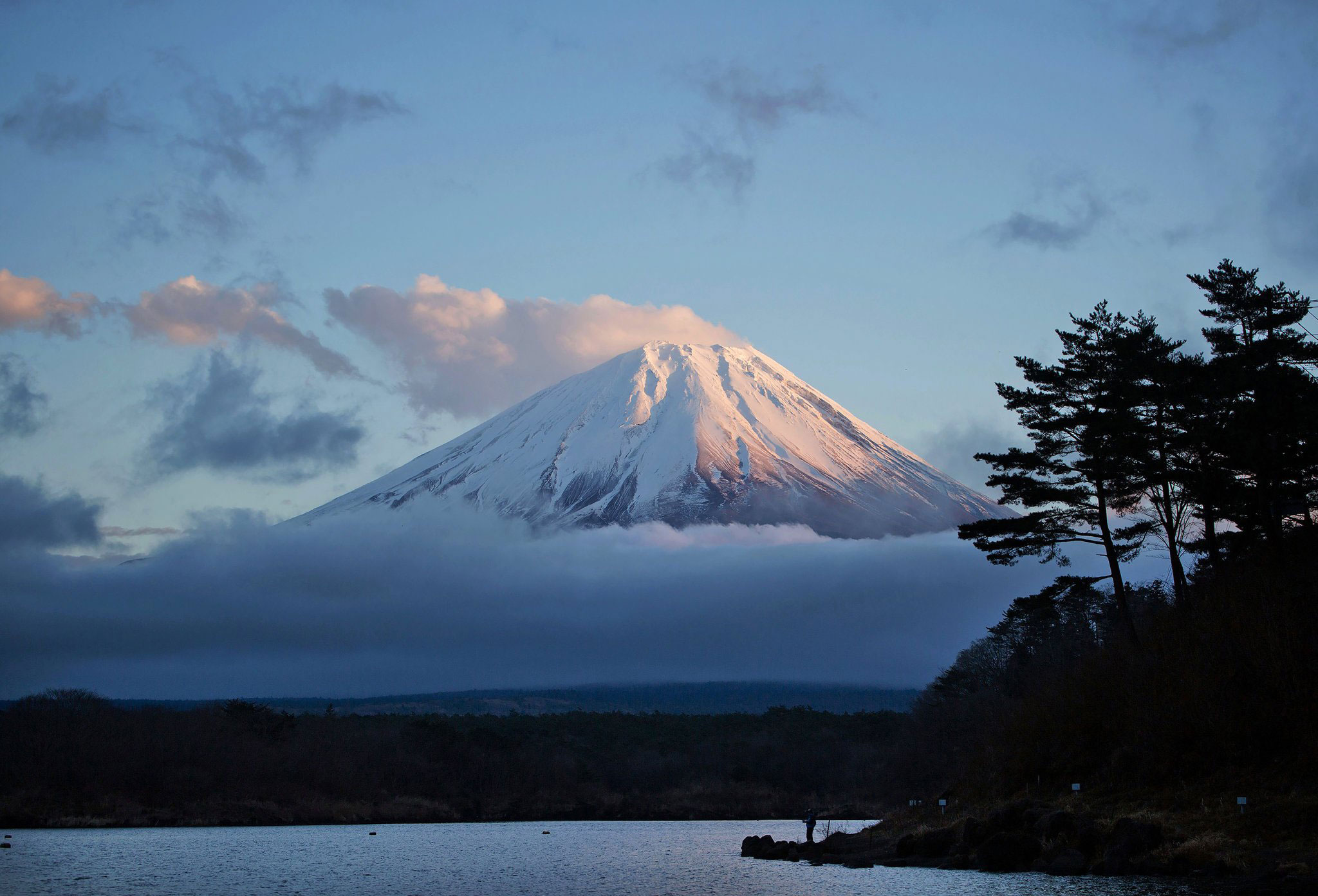
Photo credits: Ko Sasaki for The New York Times
Jukai, the sea of trees in which the soul drowns
At the foot of Mount Fuji, born from the volcanic eruption of Mount Nagao in 864 C.E., lies Aokigahara (青木ヶ原) best know with the name of Jukai (樹海, sea of trees). It is a thick forest that extends for 35 km² and that is made of caves and a maze-like vegetation with its cypresses, oaks and shrubs, including the Japanese snow flower. Its particular conformation prevents wind and solar rays from entering, giving it a spectral and silent appearance. In winter the thick fog that surrounds it forbids access to visitors who are even unable to find the entrance.
That of Aokigahara is a sad story because leaving the official paths means getting lost in its immense labyrinthine structure. Those who usually abandon the established path have only one intention: suicide. Due to this, it is not difficult to come across sign boards in both Japanese and English that try to dissuade people with macabre intentions.
“Your life is a precious gift from your parents”
“Please consult police or a doctor before you decide to die“
“Do not keep it to yourself, talk about your troubles”

Photo credits: Google images
The suicide forest
Statistics about Jukai, that go from 1950 up to today, will give you chills: from 30 to 105 suicides a year. In 1970 the Japanese government decided to set up a special annual patrol made of police officers, volunteers and journalists. This patrol is committed to searching and removing corpses, but this does not exclude the terrible possibility of running into skeletons and rotten bodies when walking through the forest. It is also possible to find Ema: wooden plaques on which suicides wrote their curses against those who forced them into taking their own lives.
Stepping away from the official path also means meeting colorful thread stretched between the trees, and this is because not all the people who enter the forest have decided to die. Some just want to reflect and these threads are necessary to find the way in case someone decides to live. However, following them almost always leads to something: some objects, an abandoned tent and, in the worst case, the lifeless body of someone who made the wrong choice.
There is another peculiarity that makes Aokigahara disturbing and mysterious: smartphones and all electronic devices stop working in the brush and the compasses go haywire. Finding the north is impossible. All this is caused by the high rate of magnetite, the mineral with the strongest magnetic properties.

Photo credits: Google images
The spirits of Jukai
In ancient times it was said that Kodama (木 魂) resided there, spirits of the trees that imitate the voices of the dead. Since they possess supernatural powers, cutting down a tree that is believed to house a kodama is considered a source of misfortune. The Japanese therefore use to mark the trunks of those trees with a sacred rope called Shimenawa. On the contrary, seeing a Kodama is considered a good omen because it means that the place is alive and full of positive energy.
But Kodama are not the only beings who are said to inhabit this place. The forest seems to be infested with real ghosts, the Yūrei. The term is made up of yū (幽 "flebile", "evanescent", but also "obscure") and rei (霊 "soul" or "spirit"). A Yūrei embodies the soul of those who died of violent death, because they committed suicide or because they were murdered. Unable to leave the world of the living, to reach the afterlife in peace they need to bring other lives with them.

Photo credits: Google images
Novels and Films in the mass culture
In 1960 Nami no tō (波 の 塔) "Tower of Waves" by Seichō Matsumoto was published, a book that speaks of two lovers who take their lives in the forest. Matsumoto describes Jukai as "the most beautiful abandoned and wild forest that exists. A perfect place to die in secret".
In recent years, Hollywood has created a series of films. In 2013, "Grave Halloween" came out, in which a young woman goes to Aokigahara with her friends to find her mother's body, a biologist who had disappeared in the forest. "The sea of trees" directed by Gus Van Sant comes to light in 2015, and the plot sees an American man who goes to Aokigahara to take his own life and there meets a Japanese man with the same intentions. In 2016, the horror-thriller "Jukai - The Forest of Suicides" invades cinemas, in which a girl travels to Aokigahara to find her lost twin sister.
Japan Modern Culture: Kimi no Na wa - Your Name
Kimi no Na wa - Your Name

Photo credits: Tumblr.com
Your name (original title: 君の名は。- Kimi no Na wa.) is the popular Japanese animated film directed by Makoto Shinkai and produced by CoMix Wave Films. Between 2016, year of the release, and 2017 it has become a big box-office hit not only in Japan but all over the world.
The work has the traits of a teenage love story, but also that of a sci-fi thriller with references to Japanese traditions and culture. With continuous changes of perspective and time, a vivid and enveloping animation, a soundtrack that accompanies scenes and underlines every detail, Your name has won millions of fans over.
The Plot

Photo credits: www.zerochan.net
Focus of the story are two high school kids, Mitsuha Miyamizu and Taki Tachibana.
Mitsuha lives in the small mountain village of Itomori, near Tokyo, and loves spending her time with her two friends Sayaka and Tessie. She has a younger sister and a father, a local politician, who seems to care little for them. Their mother died and the two sisters live with their grandmother. Mitsuha, like her grandmother, is destined to become a Miko, a priestess of the local temple of which her family is the guardian. But this kind of life doesn’t suit her, as well as causing her a bit of embarrassment with her schoolmates. What she really wants is to move to the glittering metropolis and live like a normal girl, or better, be reborn as handsome boy from Tokyo.
Taki, on the other hand, lives right in the center of Tokyo and leads a normal life with his school duties, friends and his part-time job. In his free time he works as a waiter in an Italian restaurant, Il giardino delle parole (The garden of words), a name that is a clear reference to Shinkai’s previous work. He is a bit impulsive but still kind at heart, and hopes to become an architect in the future. Like the other male coworkers, he is in love with his beautiful colleague Miki Okudera.
One day, however, the life of the two protagonists, who live without knowing of each other's existence, is overturned by something unbelievable. In what seemed like a normal morning, the two find out they have switched their bodies without any plausible explanation. These exchanges will continue for some time so that, after the initial surprise, the two try to adapt to their new condition. Communicating mainly through a diary on their cell phones they will in a way help each other. Mitsuha, with her sweet and affable side, will help Taki to have a date with the colleague he is in love with. Taki, with his temperament, will help Mitsuha face his classmates and become more self-confident. It will not take long before they begin to feel something for each other, even though they have actually never met.
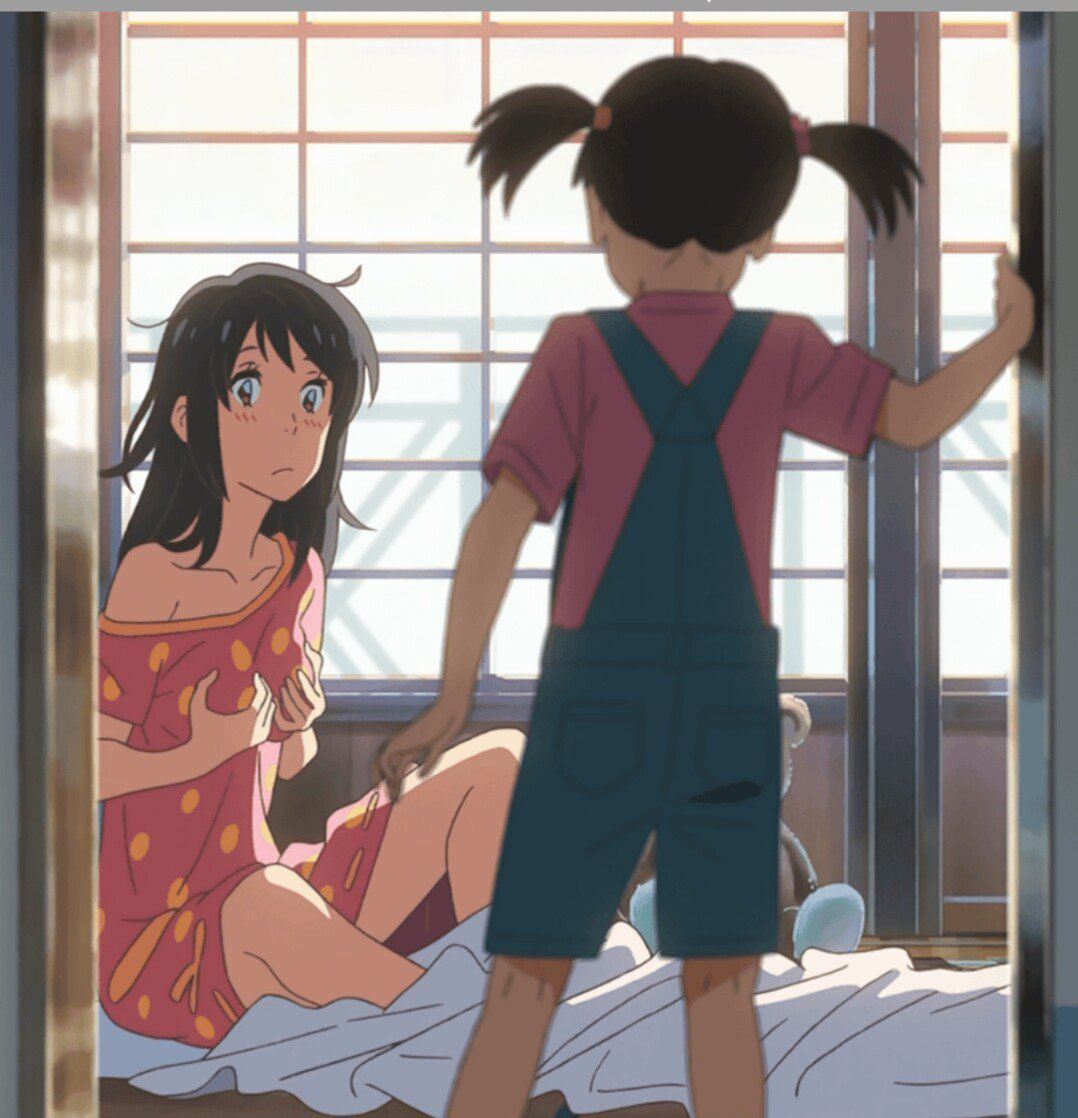
Photo credits: twitter.com
One day Mitsuha tells Taki about a comet that will pass by on the day of his date with the beautiful Okudera. At Itomori, that will be the day of the autumn festival. The boy does not understand what she's talking about but, when he tries to call Mitsuha on the phone for the first time, his attempt fails. He understands that for them it is no longer possible to switch bodies and so he decides to go and meet her in person. When he finally discovers the name of her village, he also finds out that it had been destroyed three years before. A fragment of the comet Tiamat had fallen on Itomori destroying the village almost completely and killing a third of the inhabitants, Mitsuha as well.
Taki then goes to the sanctuary of the local guardian god, Musubi, on top of Mount Hida just outside the village. After entering the holy place he decides to drink the Kuchikamizake, the sake prepared by Mitsuha and that he himself, with her body, had left there as an offer. This allows him to actually travel back in time. He sees Mitsuha's past and wakes up in the girl's body again, just before the comet's fall. Aware of what will soon happen Taki does everything to ensure that the inhabitants of the village recognise the danger themselves. But he also knows that this is his last chance to see Mitsuha. He runs to meet the girl at the top of Mount Hida, where his body of the future had been left. Here, the two protagonists can see each other, for a few moments, before their memories are erased. Their commitment saves the village thus changing the course of history, but at the same time leaves a sense of emptiness inside of theme. A hole left from something to which they can not give either a name or a face that urges them to look for each other, even if they have no recollection of what had happened.
The Success

Photo credits: one--anime.blogspot.it
The film, which premiered in July 2016 at the Anime Expo in Los Angeles, was then released in Japanese cinemas starting from August that year. Immediately acclaimed as a masterpiece, in its triumphal march it reached 92 countries, earning more than 355 million dollars. This makes it the 1st-highest-grossing-anime in history. A goal that even authors themselves did not expect to reach.
This commercial success made it the 2nd-highest-grossing film of all time in Japan after Hayao Miyazaki's Spirited Away. It also is 4th-highest-grossing film after Titanic and Frozen. But it has also earned the position of most watched Japanese anime in several other countries of the world.
As for Italy, the first Italian trailer was released only on December 6, 2016. Subsequently, the film was screened in about 160 theaters from 23 to 25, January 2017 thanks to a collaboration between Dynit and Nexo Digital. The success at the box-office was so great that several other dates were decided, with a total income of around 700,000 euros.
Looking at these numbers, it’s no surprise that director Shinkai has been sometimes referred to as Hayao Miyazaki’s successor. Title that the person himself has humbly refused saying he does not deserve it.
Themes and Symbolism
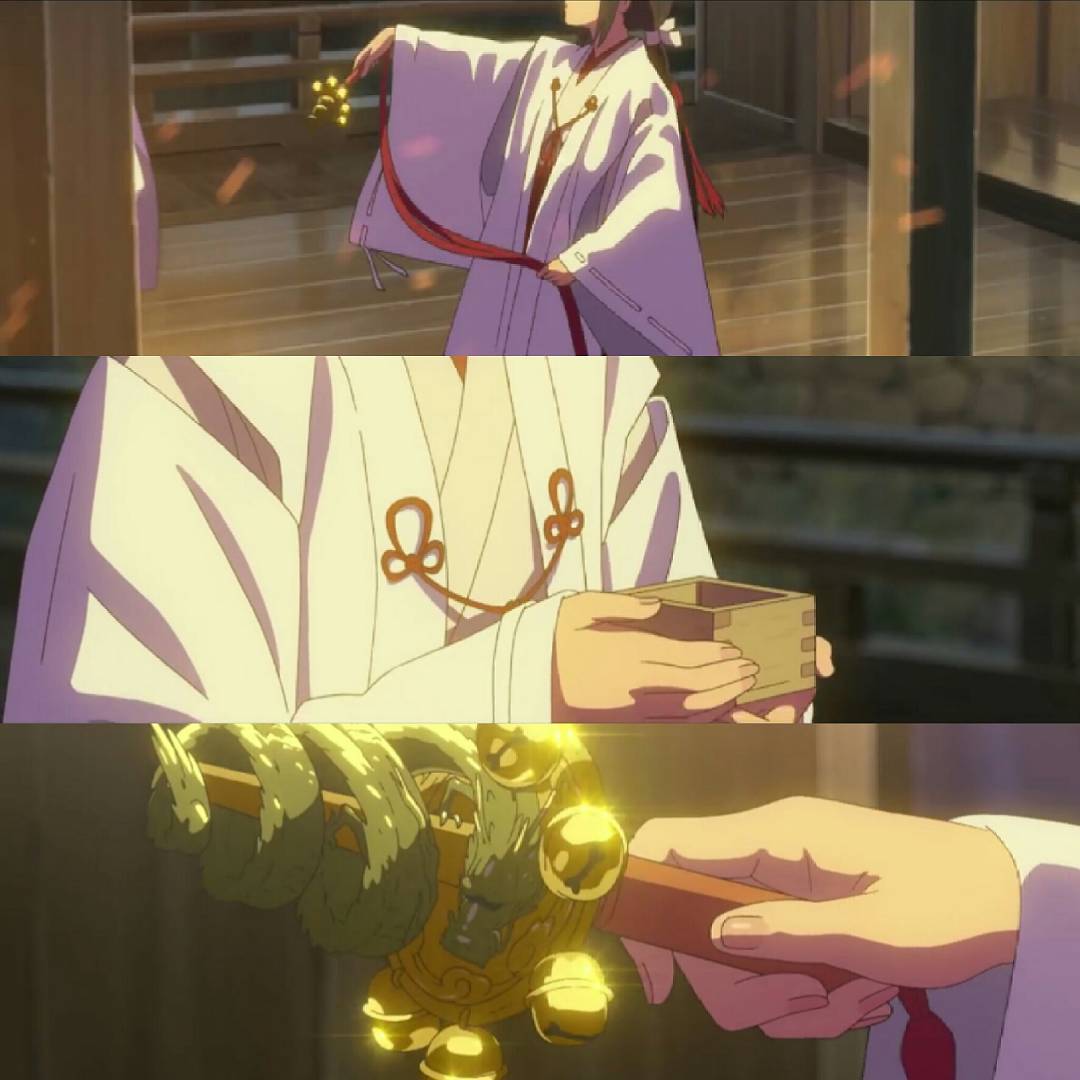
Photo credits: instarix.com
The inspiration for the story came to the author from works such as Inside Mari by Shūzō Oshimi or Ranma ½, as well as from classical works such as the Torikaebaya Monogatari dating back to the Heian period (794-1185). But another source of inspiration for the author seems to have been an ancient poem by the poet Ono no Komachi, who lived between 800 and 900. In one of her poems the woman wrote: "Before I slept I thought of him, and into the dream he strayed. Had I known it was a dream, in the dream I would have stayed."
And in fact, rather than swapping, the two protagonists of Your Name dream of each other. This is possible because Mitsuha is a priestess devoted to the God Musubi, the deity that governs experiences and human connections. When Taki, in Mitsuha's body, reveals himself to her grandmother, the old woman does not seem so surprised. Indeed, she herself had experienced the same thing, being it a particular family power, even though she no longer remembered the boy in her dreams.
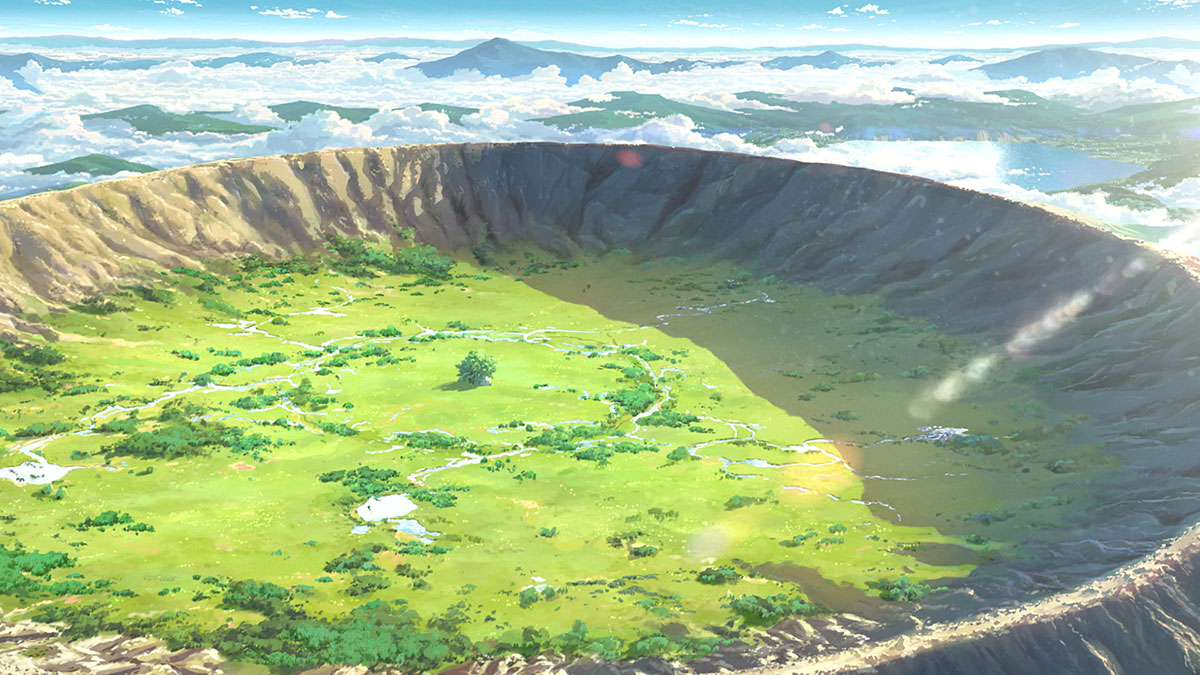
Photo credits: forum.gamer.com.tw
Located at the top of a mountain that appears to be the crater caused by a previous appearance of the comet, the temple is a sacred place. It represents the boundary between the kingdom of Gods and Earth, between the realm of the living and that of the dead. To return to the mortal world you have to leave a part of yourself, and Mitsuha left a part of herself in the sake she prepared. The creation of the Kuchikamizake is a family tradition, along with traditional dances and braiding threads. It is a particular method of creating sake which involves chewing rice to activate its fermentation.
In this regard, Mitsuha grandmother’s words are very important:
“Musubi is the old way of calling the local guardian kami.
Tying thread is Musubi. Connecting people is Musubi.
These are all the kami’s power.
So the braided cords that we make are the kami’s art and represent the flow of time itself.
They converge and take shape. They twist, tangle, sometimes unravel, break, then connect again.
Musubi-knotting. That’s time.
Musubi is also sharing something with others”
These words not only represent a very profound spiritual concept, but also make us understand the power of Taki’s gesture when he drinks the sake prepared by Mitsuha. In fact, this gesture is a symbolic act of profound connection in which the young man assumes in himself a part of Mitsuha and of her spiritual power, allowing him to meet her as well.

Photo credits: fakemorisummer.wordpress.com
Equally symbolic is the fact that the two of them meet at sunset. In fact, according to ancient legends sunset is the moment when the boundary between the world of the spirits and the world of the humans fades for a short moment. And that's why they can finally meet, even though Mitsuha had died 3 years before. The two, however, have to sacrifice their memories in order to return to the earthly world.
Another Japanese legend finds its space in the story. Taki and Mitsuha seem to be linked by what many know as the 'red thread of fate’ that is said to tie two people destined to be together. Red thread that, in this case, is symbolized a thread that Mitsuha herself had made and then gave to Taki.
Shinkai, who as we said before did not expect the worldwide success it had in terms of audience, said that it was his intention to create a film that targeted Japanese youth. He wanted to create something that would push them to believe in their future.
He said: "I created this movie hoping that younger audiences would believe that ‘maybe there is the one in my life I might have not met yet but hopefully will see tomorrow or in the future.’ "

Photo credits: www.amazon.co.jp
Another important issue addressed by the film is the juxtaposition between the small rural village and the great metropolis of Tokyo, something that the author himself has experienced. In fact, he grew up in a small village and later moved to Tokyo, which is common to many young Japanese people.
Here we see Mitsuha, she lives immersed in local traditions but yearns for the city life; and we see Taki, immersed in city life, that learns to appreciate the past and traditions.
Once again, it is the grandmother's words that help us: "Even if the words have been lost, it is important to preserve these traditions". With this, it looks like she want us to remember where we come from, in opposition to her son, a corrupt local politician who chose to abandon the temple completely.
Ancient traditions represent the founding substratum of a community, what the present is based on and which binds people together. And also what enables them to face even the darkest times.
Japan is no stranger to natural disasters, just remember the recent earthquake in 2011, or the great Kanto earthquake in 1923. And how to forget the atomic disaster that put an end to Second World War. In all these occasions Japan has always found the way to start anew, placing one interest over the others: what can we do to prevent this from happening again. No wonder then that in this film the two protagonists try to prevent what would have been a real tragedy.
The goal of the film is to give hope, but also invites us to never forget our roots and the spiritual union that they can create.
We could therefore say that Your name has a cathartic function for the viewer.
Strong Points

Photo credits: Lovejude
Whether you are among those who liked the film or not, Your Name certainly has several objective strong points.
First of all, the animation and the extremely realistic render of setting, as it is in the style of the author after all. The film’s landscapes are described in every detail and the colors are warm and bright. The images are so vivid that are able to convey, even with their colors only, the intense and pure emotions of the protagonists, thus contributing to the cathartic function of the film.
Also worthy of mention is the soundtrack that was composed by the vocalist of the Japanese rock band Radwimps, Yojiro Noda.
Noda, specially requested by Shinkai himself, had only one request to respond to :
“make it in a way that the music will (supplement) the dialogue or monologue of the characters".
And considering the results we can say that this soundtrack is one of the keys to the success of the film..
This world seems like it still wants to keep me tamed
As you wish, then- I'll struggle beautifully.
Your Name Theme song - Yojiro Noda
Yet despite the positive critics, Shinkai claimed that the film is actually not as good as he had thought. The lack of time and funds forced him to deliver to the public a work that he himself calls incomplete. He stated : "There are things we could not do, Masashi Ando [Director of animation] wanted to keep working [on] but we had to stop for lack of money ... For me it’s incomplete, unbalanced. The plot is fine but the film is not at all perfect. Two years were not enough."
Related Products and Remake

Photo credits: Amazon.co.jp
In addition to the film, products related to Your Name include other works, such as a novel, manga, film guides and CDs. In December 2016 alone, the sales of these products amounted to around 2.5 million copies.
The novel and manga of the same name are published in Italy by the J-Pop publishing. The Blu-ray and normal DVD versions, released in July 2016, arrived in Italy in November 2017.
Sales confirmed the success in cinemas.
Last September it was also announced that Kimi no na wa will soon have a Hollywood live action adaptation.
The chosen producer is none other than J.J. Abrams (Star Trek, Mission impossible). The announcement has already triggered the reaction of many people, both fans of the film and those who are simply curious. There are many voices worried that this adaptation could overturn what is considered a masterpiece.
And records do not seem to play in favor of this live action. It is still recent news that the director of Death Note's Netflix remake had to close his Twitter account after being strongly attacked for his work. Attacks that did not spare another adaptation of the popular anime Ghost in the shell, whose film with Scarlett Johansson did not really satisfy its fans.
Kimi no na wa is certainly not a easy film to adapt in a western setting because of its numerous references to particular places and particular cultural and religious concepts. Think of Mitsuha and her family, guardians of the shrine of the deity Musubi and the ancient traditions of the village.
As for the places, in addition to Itomori which is a fantasy village, there are real cities. Not only Tokyo, but also Hida, and the Itomori Lake itself is inspired by a famous Japanese lake, Lake Suwa.
Only time will tell us what the future of this adaptation will be.
Trailer:







